Data Insights
Epoch AI’s data insights break down complex AI trends into focused, digestible snapshots. Explore topics like training compute, hardware advancements, and AI training costs in a clear and accessible format.
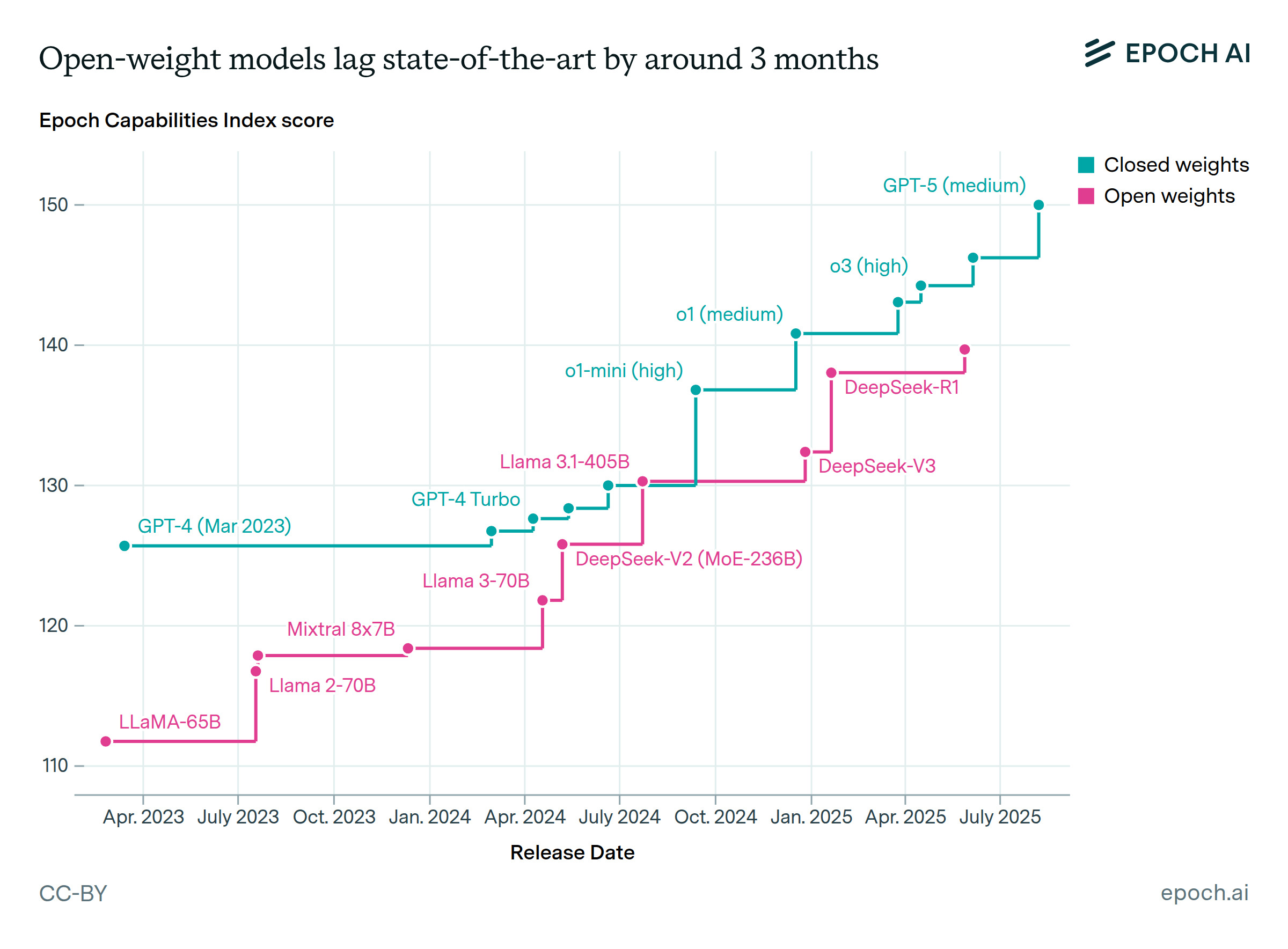
Open-weight models lag state-of-the-art by around 3 months on average
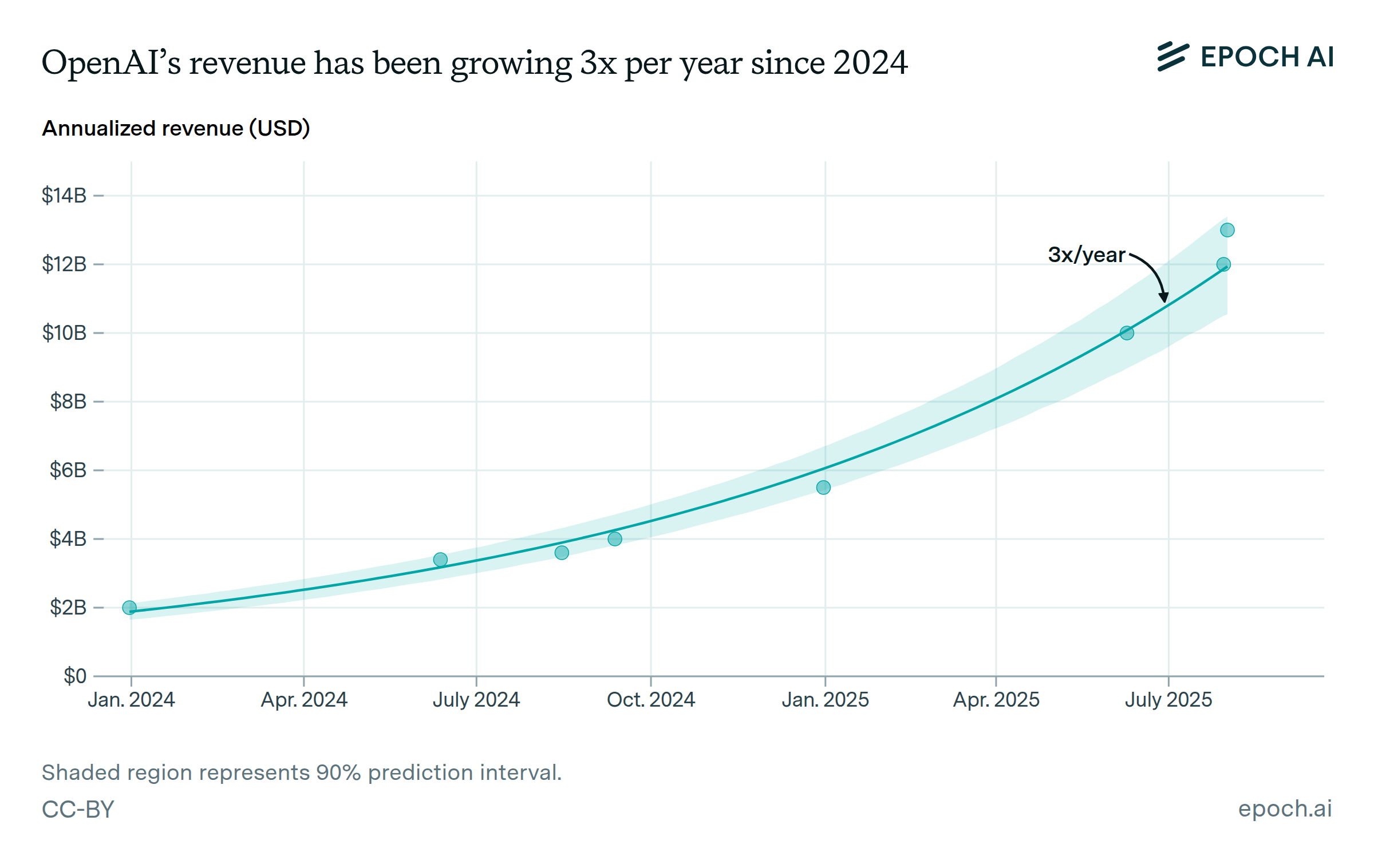
OpenAI’s revenue has been growing 3x a year since 2024
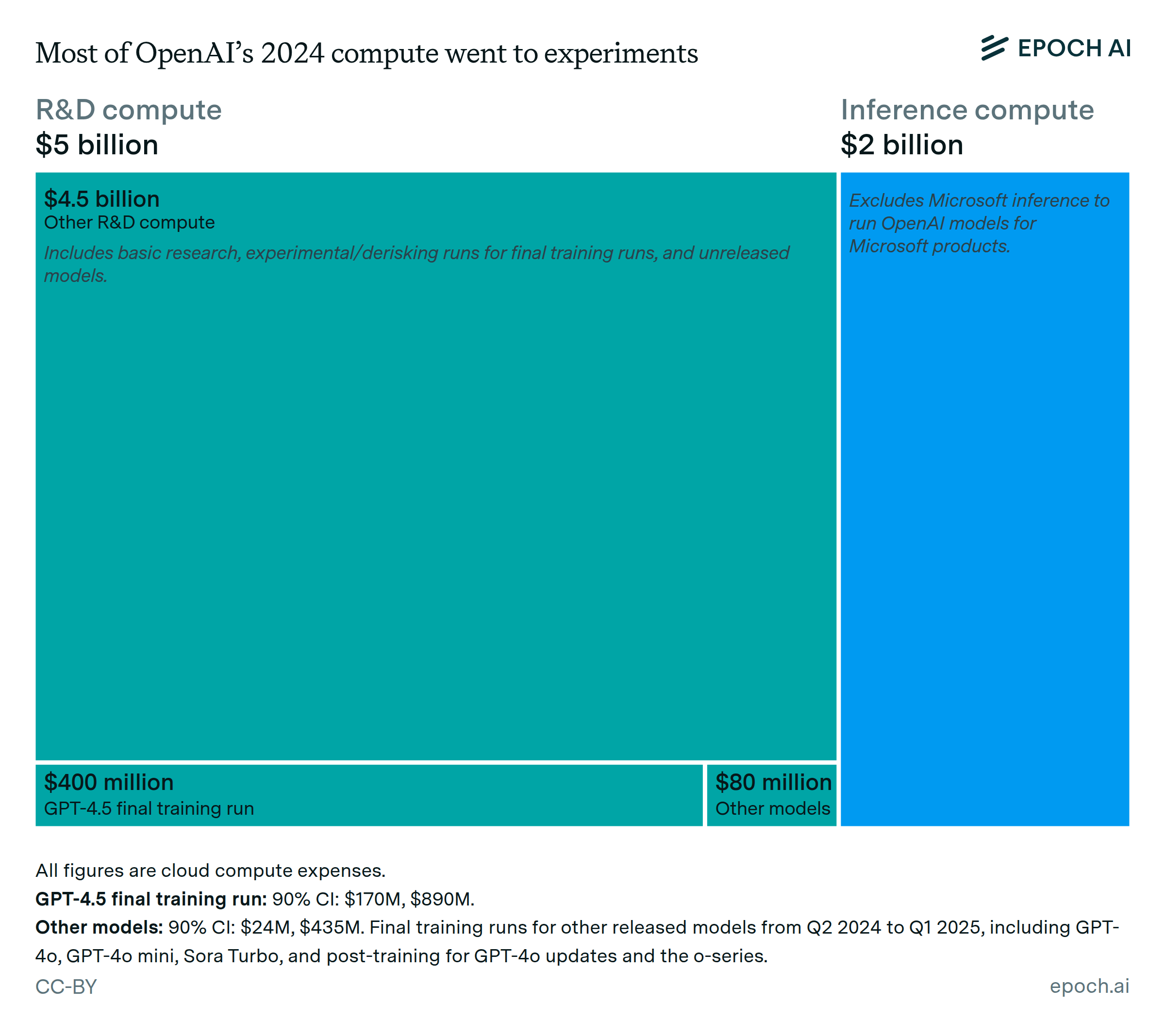
Most of OpenAI’s 2024 compute went to experiments

AI capabilities have steadily improved over the past year

AI developers accurately report GPQA Diamond scores for recent models
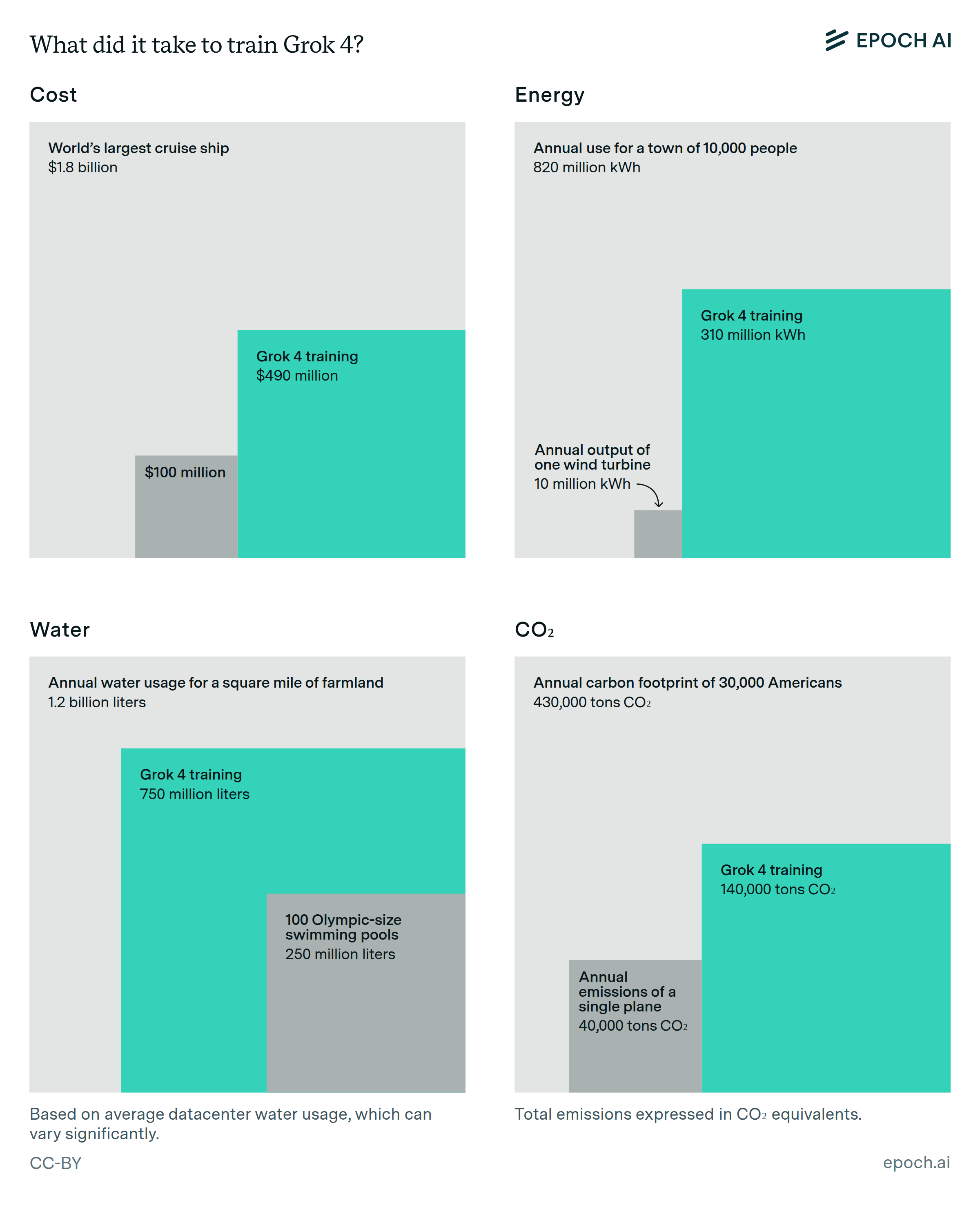
What did it take to train Grok 4?
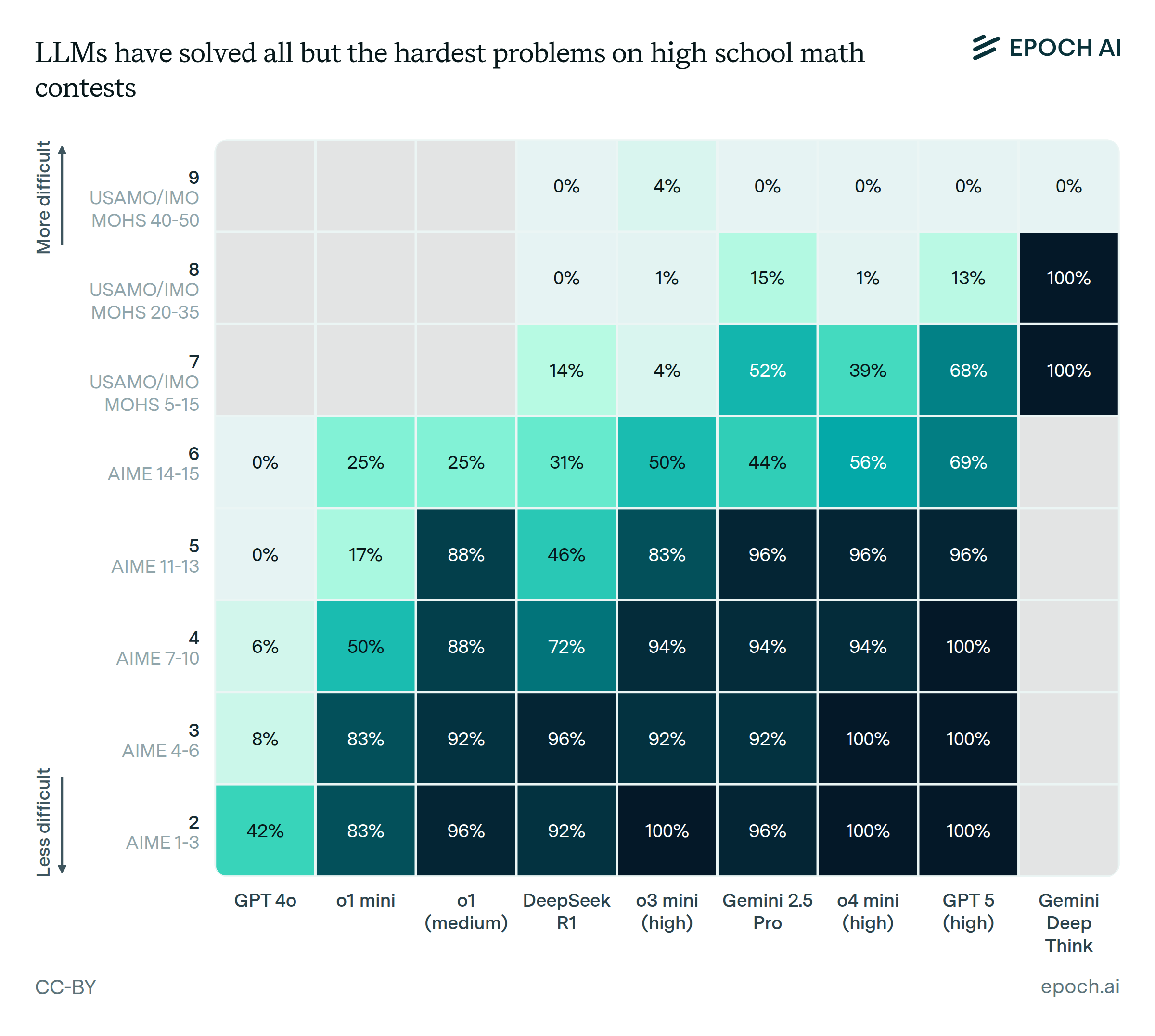
LLMs have not yet solved the hardest problems on high school math contests
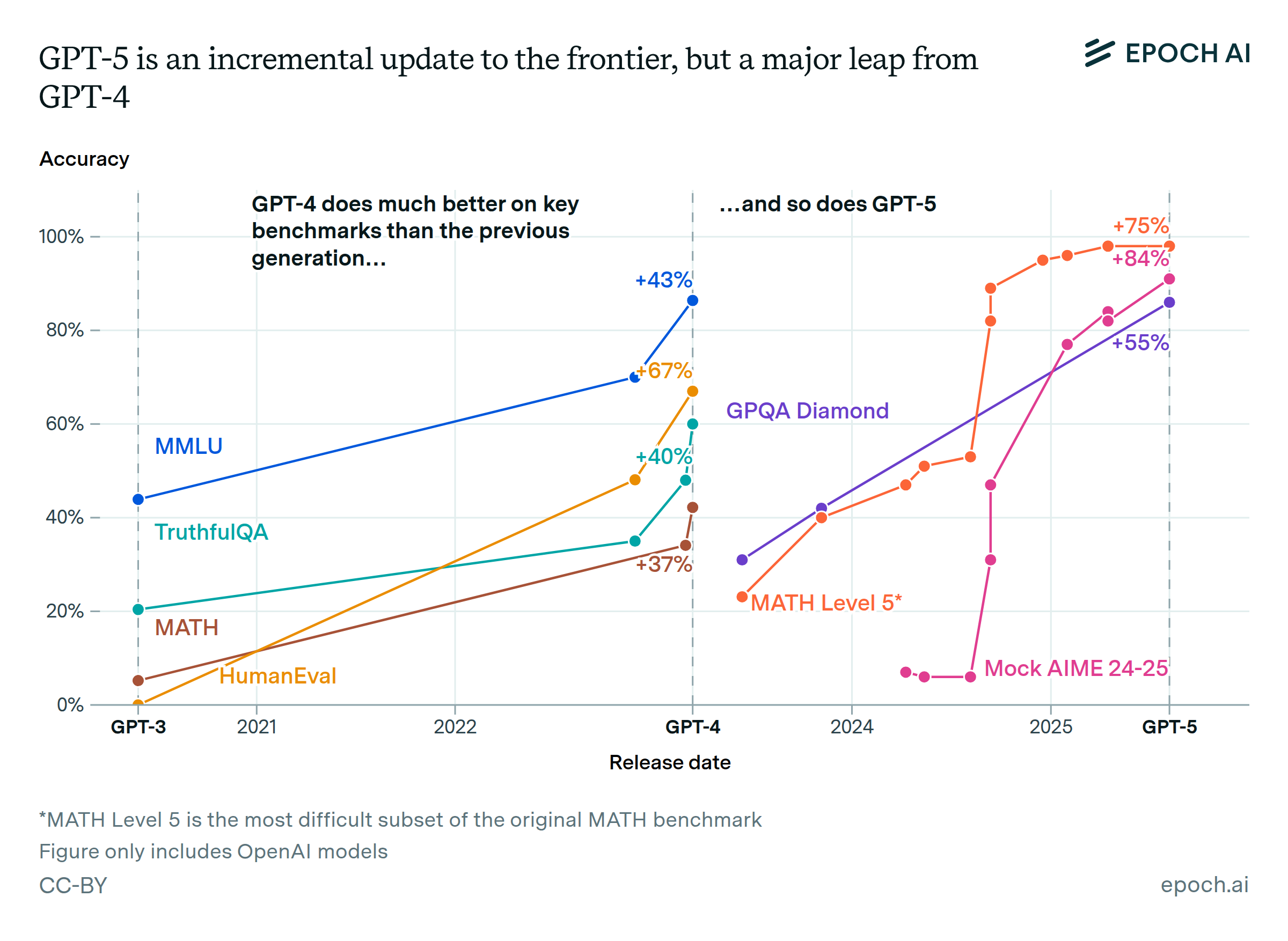
GPT-5 and GPT-4 were both major leaps in benchmarks from the previous generation
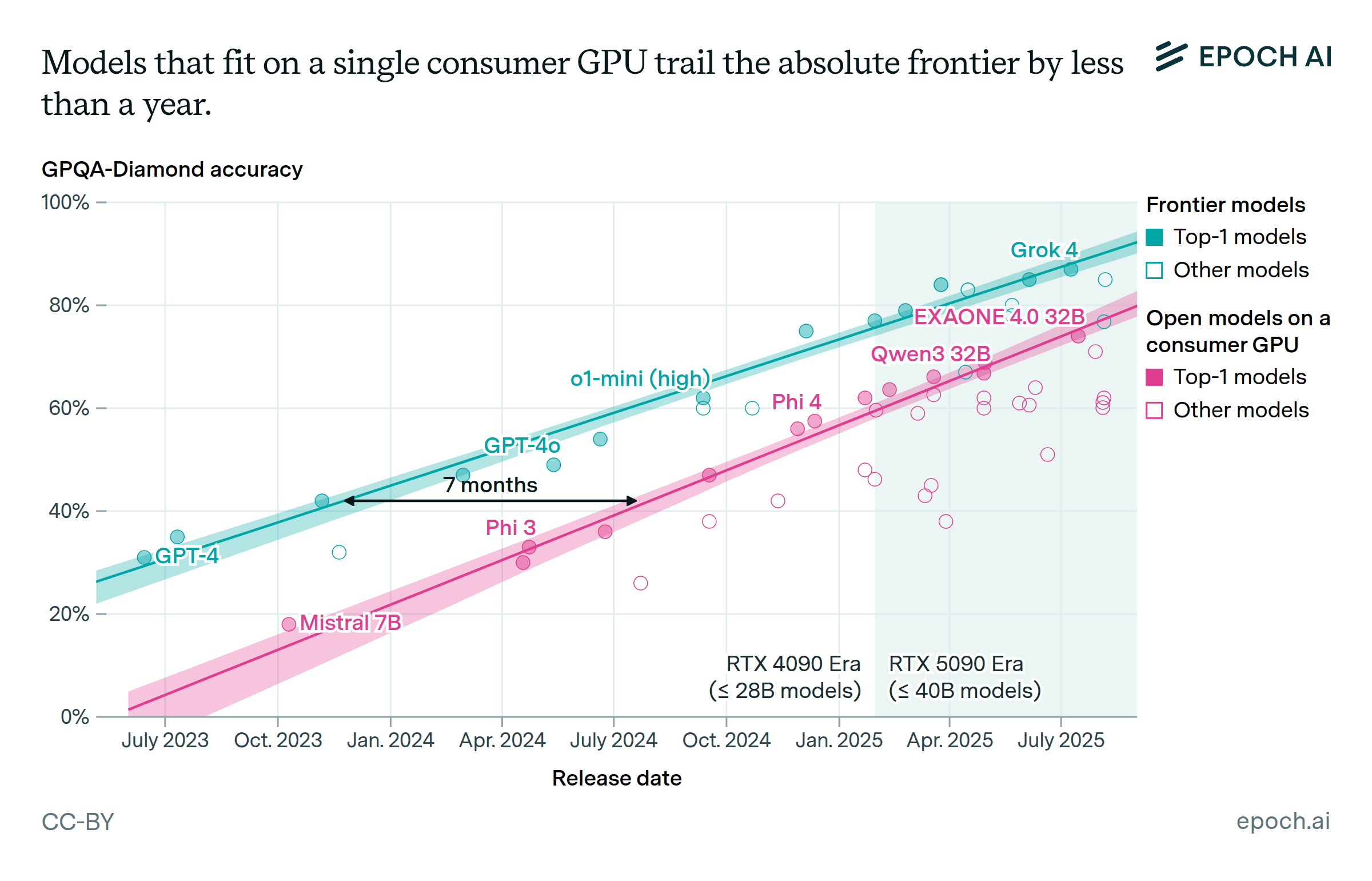
Frontier AI performance becomes accessible on consumer hardware within a year

Compute is not a bottleneck for robotic manipulation

Training open-weight models is becoming more data intensive
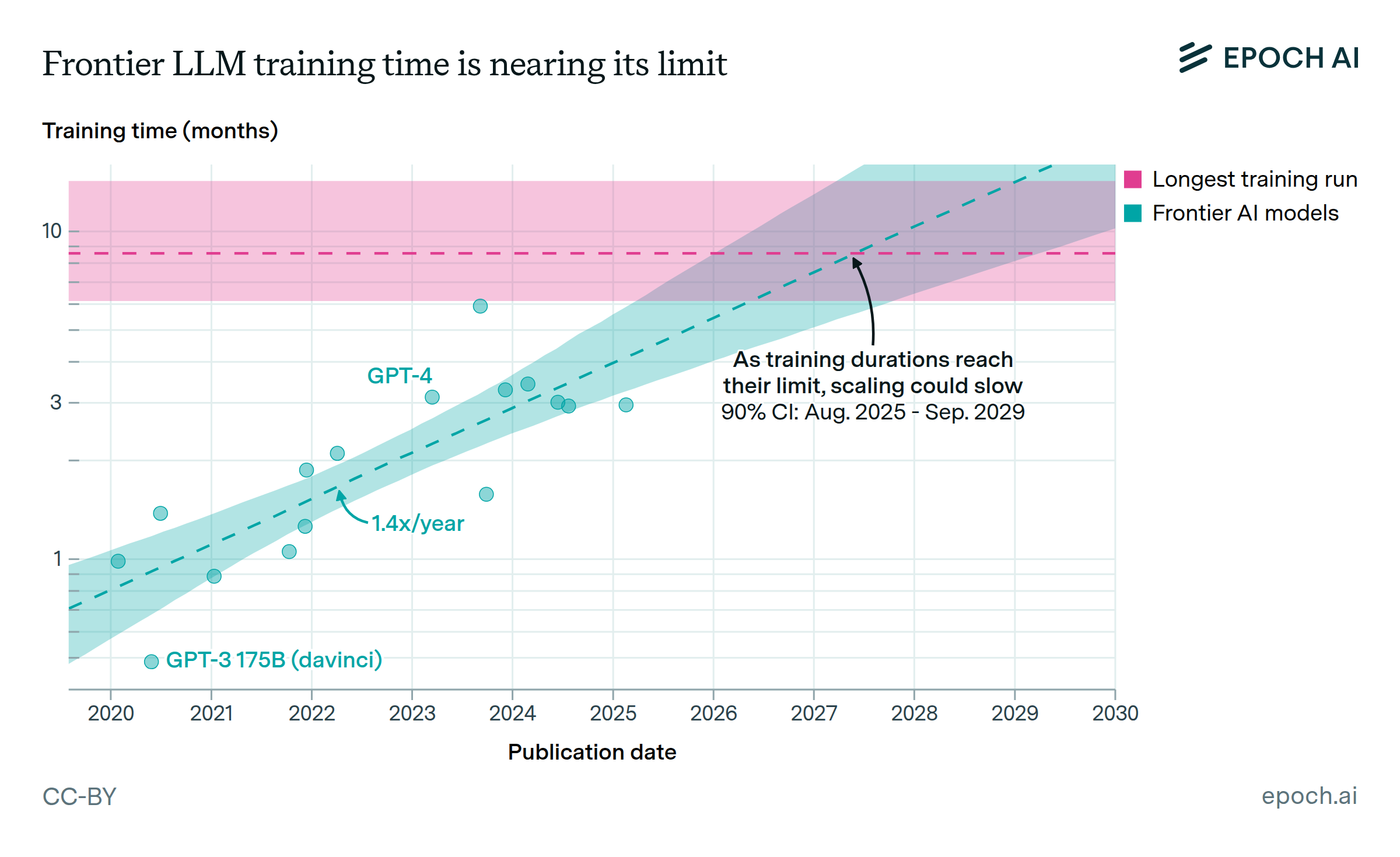
Frontier training runs will likely stop getting longer by around 2027

LLMs now accept longer inputs, and the best models can use them more effectively
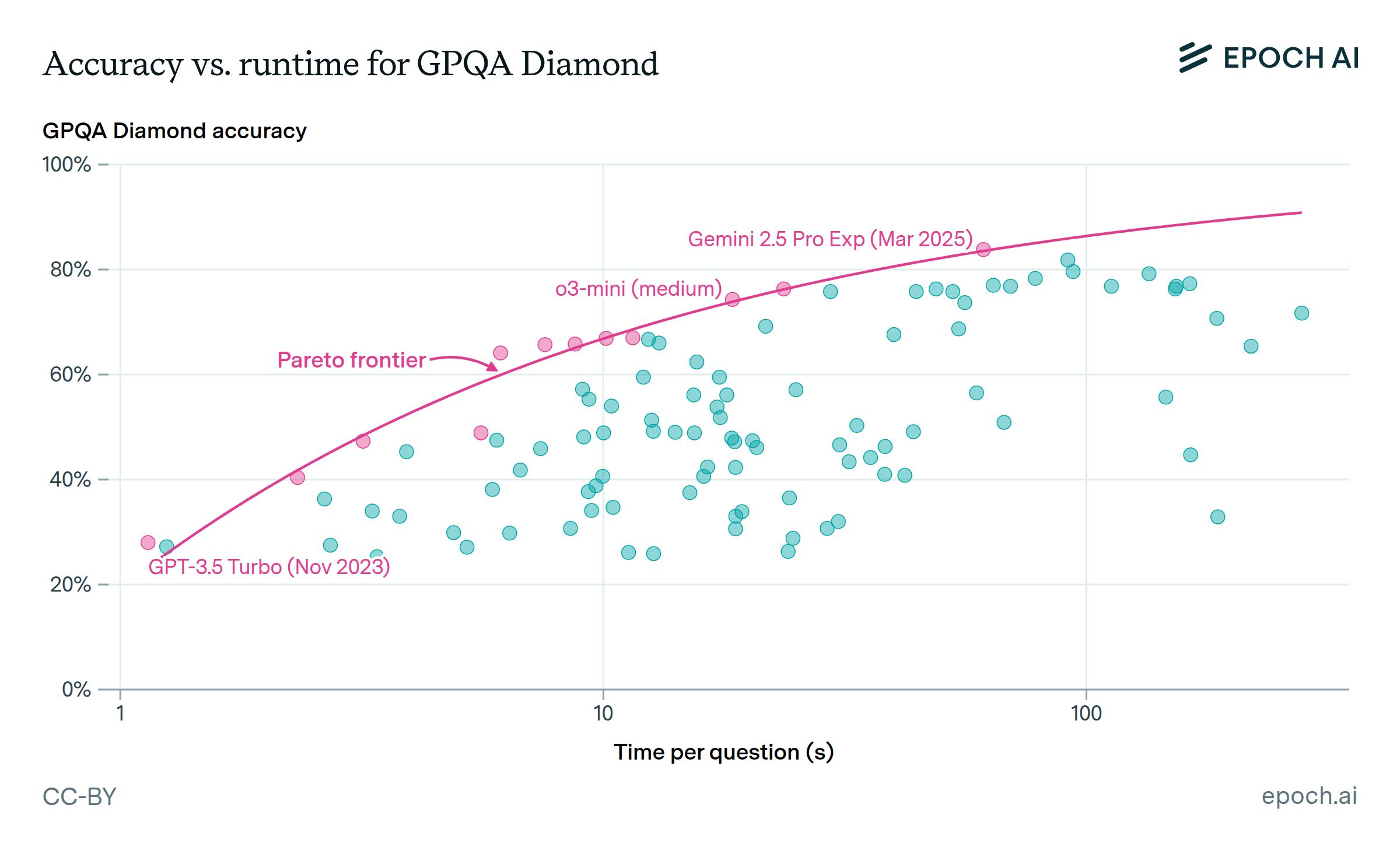
LLM providers offer a trade-off between accuracy and speed
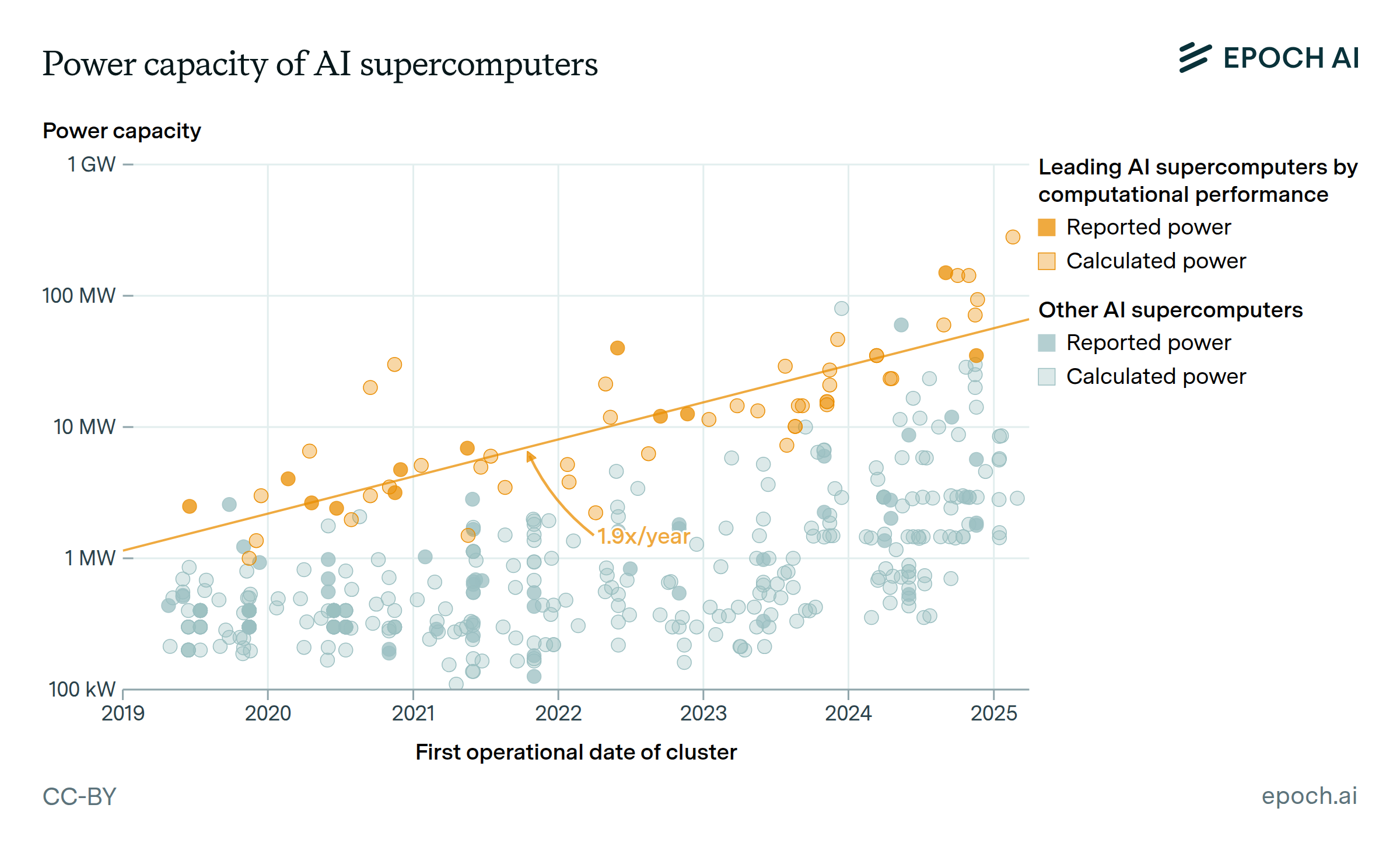
Power requirements of leading AI supercomputers have doubled every 13 months
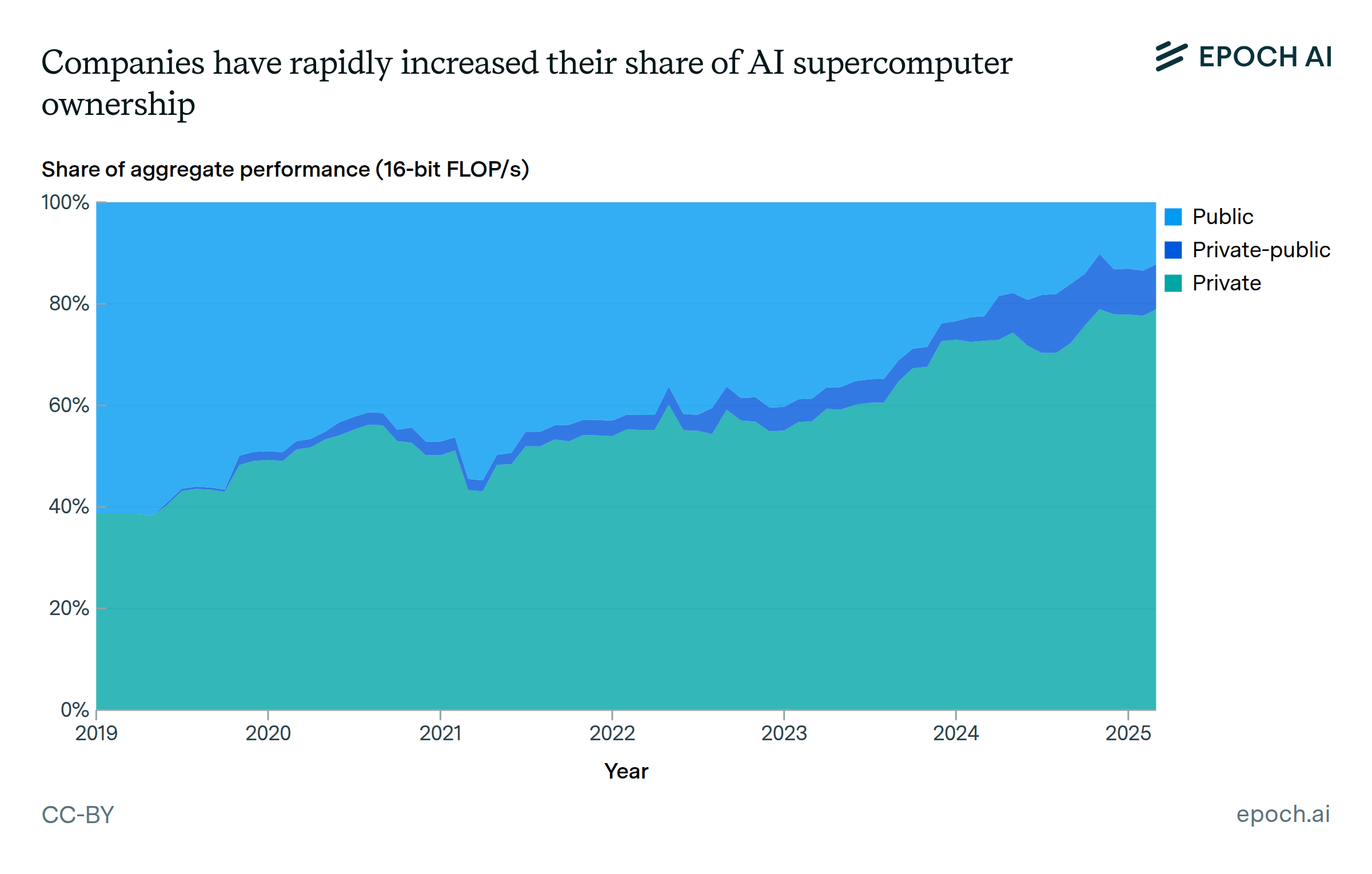
Private-sector companies own a dominant share of GPU clusters
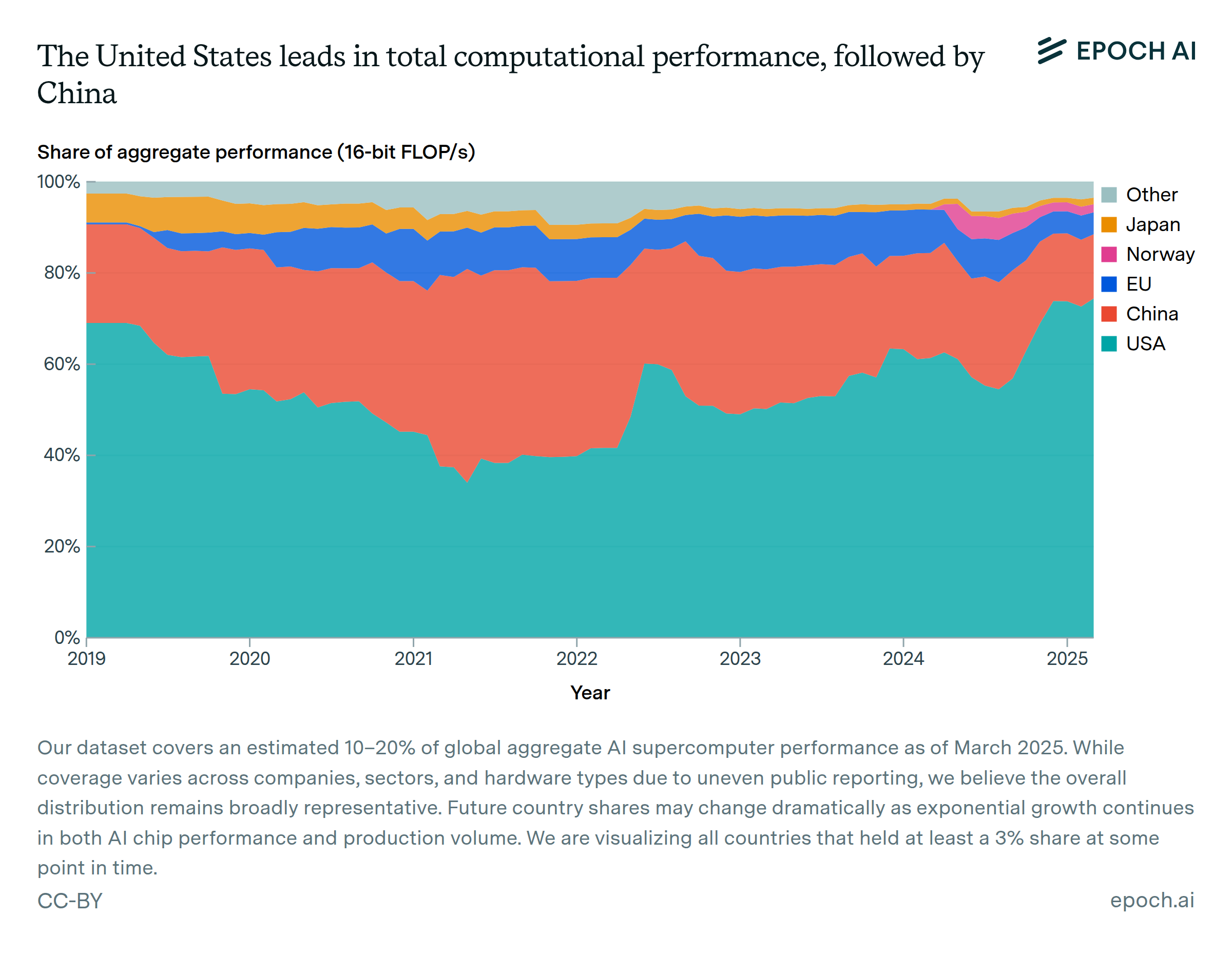
The US hosts the majority of GPU cluster performance, followed by China

Acquisition costs of leading AI supercomputers have doubled every 13 months

Widespread adoption of new numeric formats took 3-4 years in past cycles
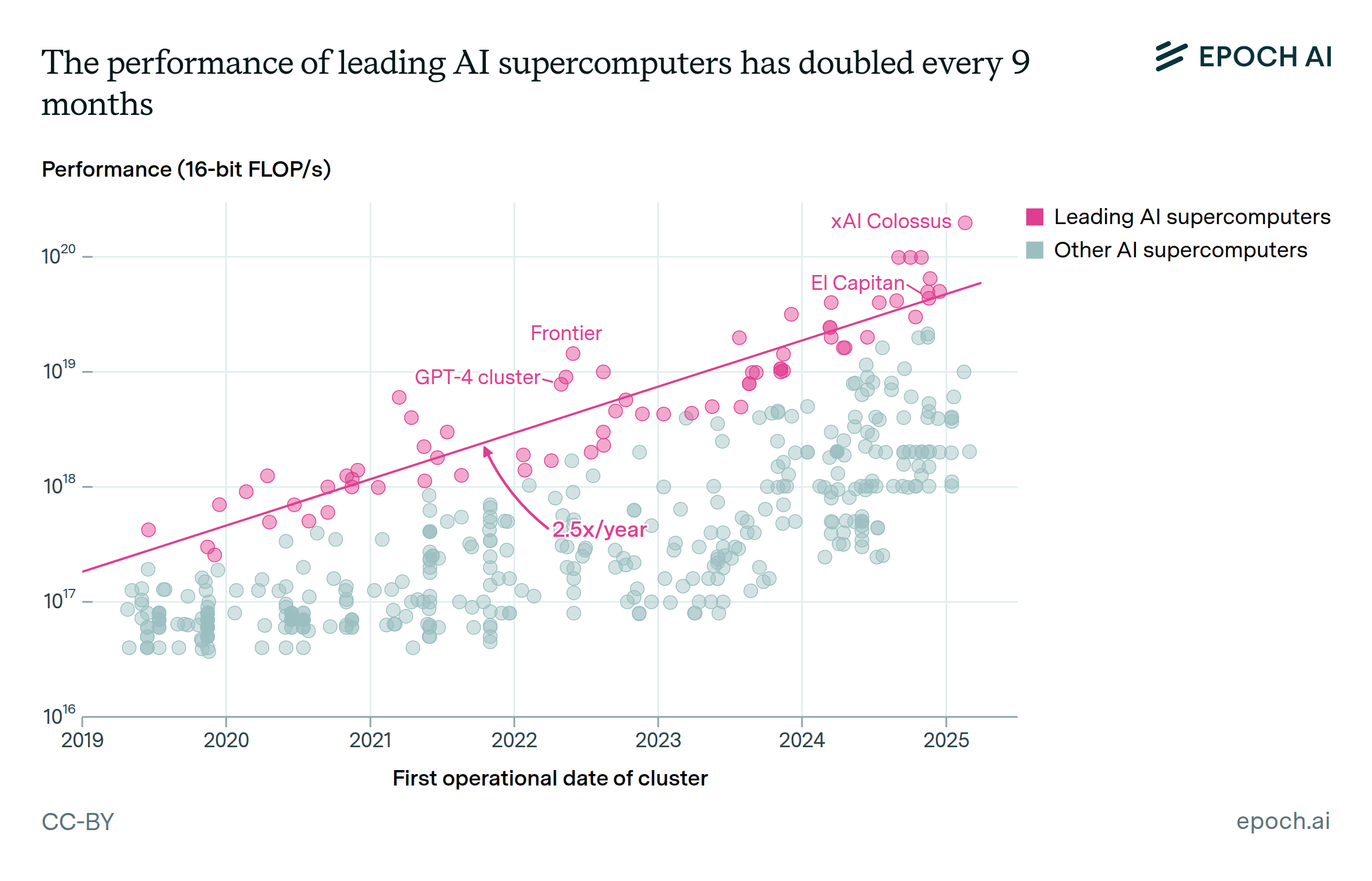
The computational performance of leading AI supercomputers has doubled every nine months
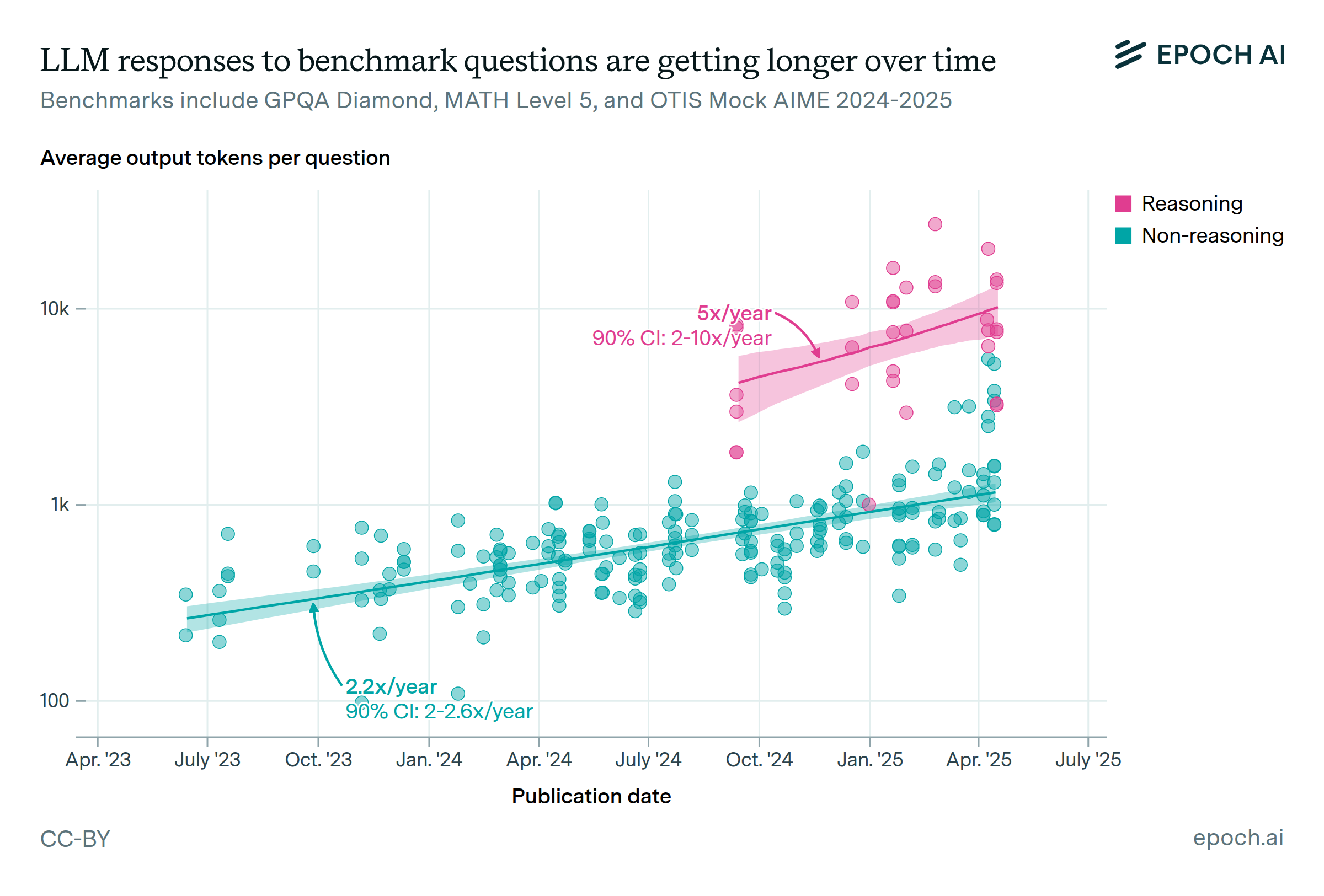
LLM responses to benchmark questions are getting longer over time
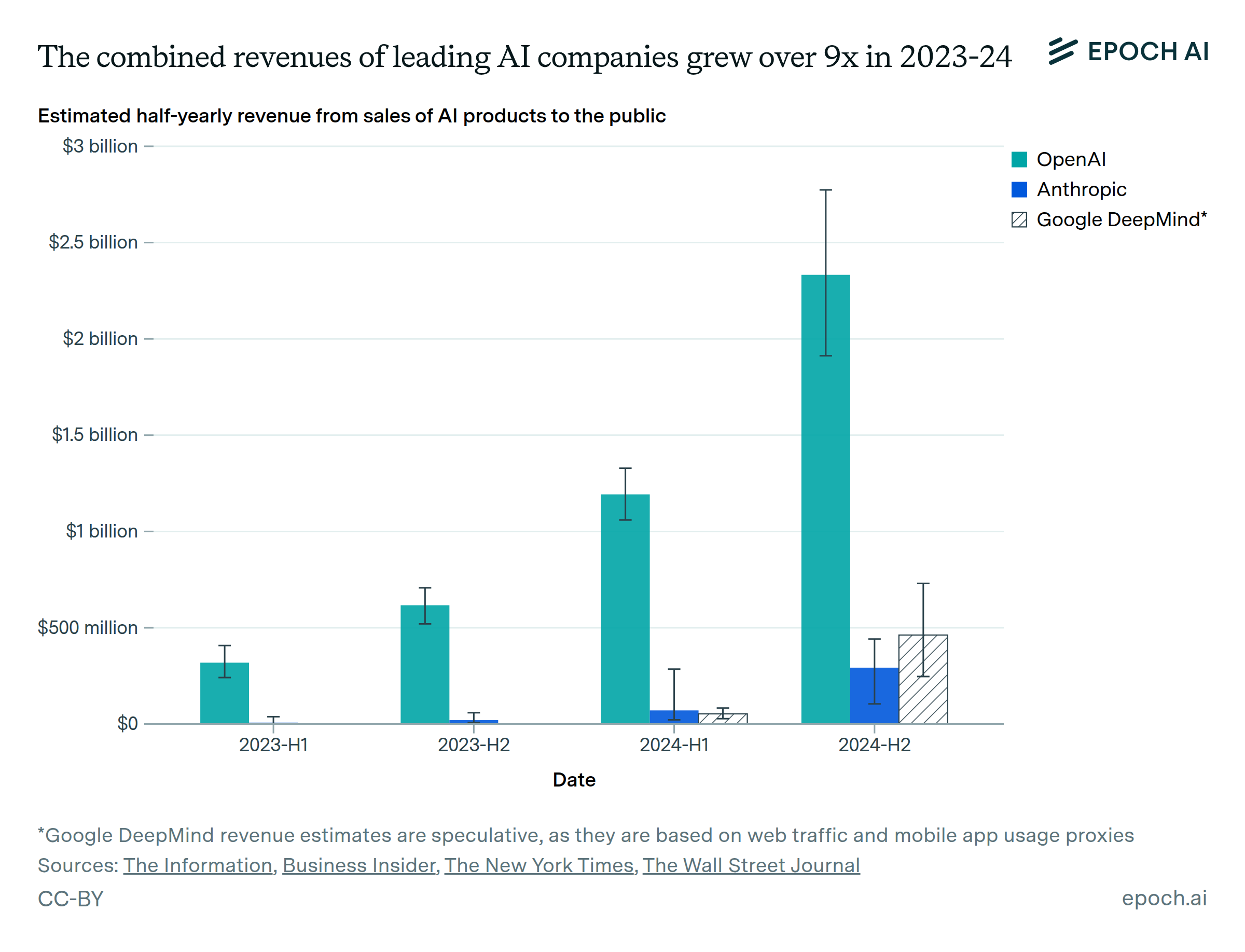
The combined revenues of leading AI companies grew by over 9x in 2023-2024
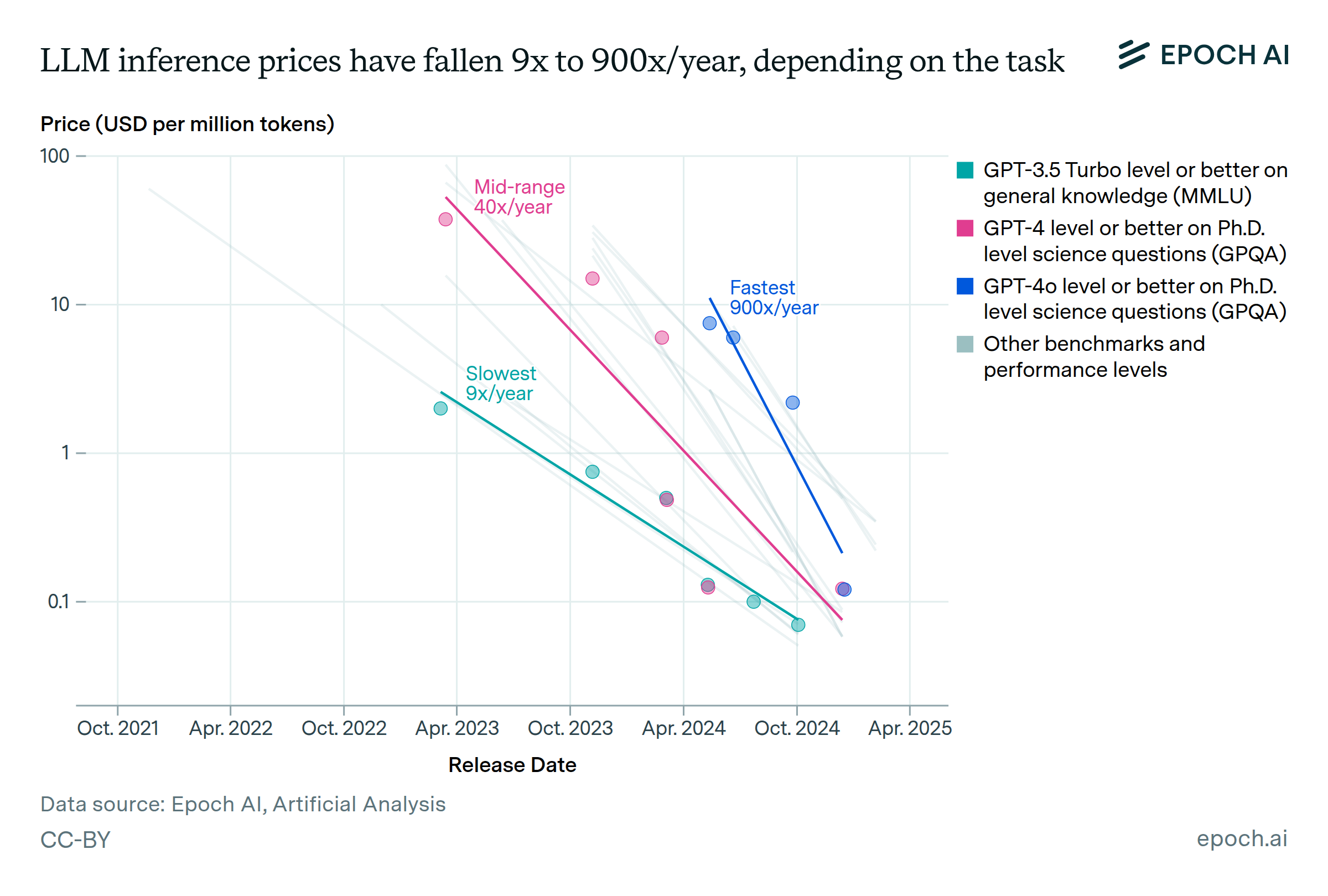
LLM inference prices have fallen rapidly but unequally across tasks
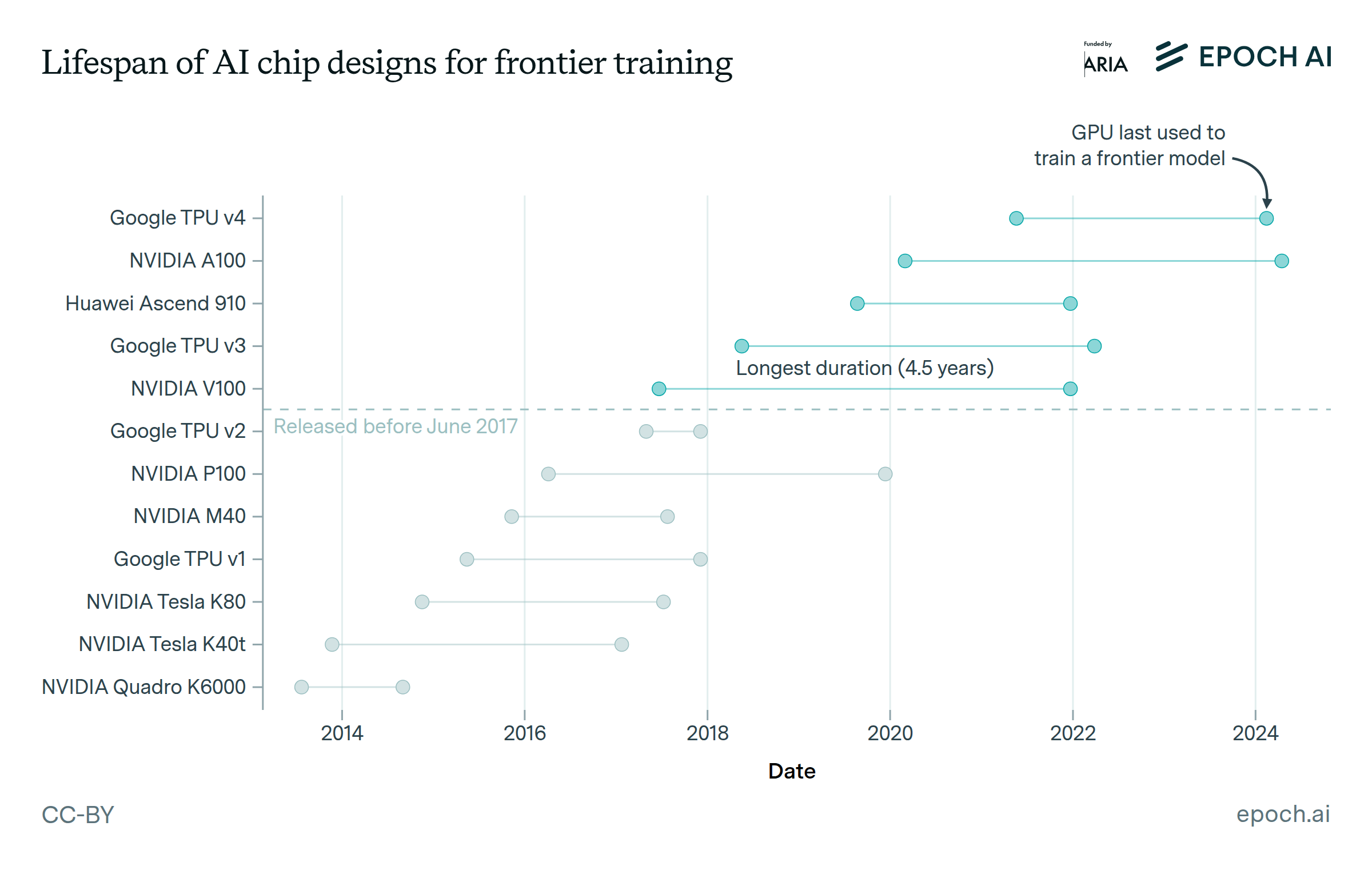
Leading AI chip designs are used for around four years in frontier training

Biology AI models are scaling 2-4x per year after rapid growth from 2019-2021
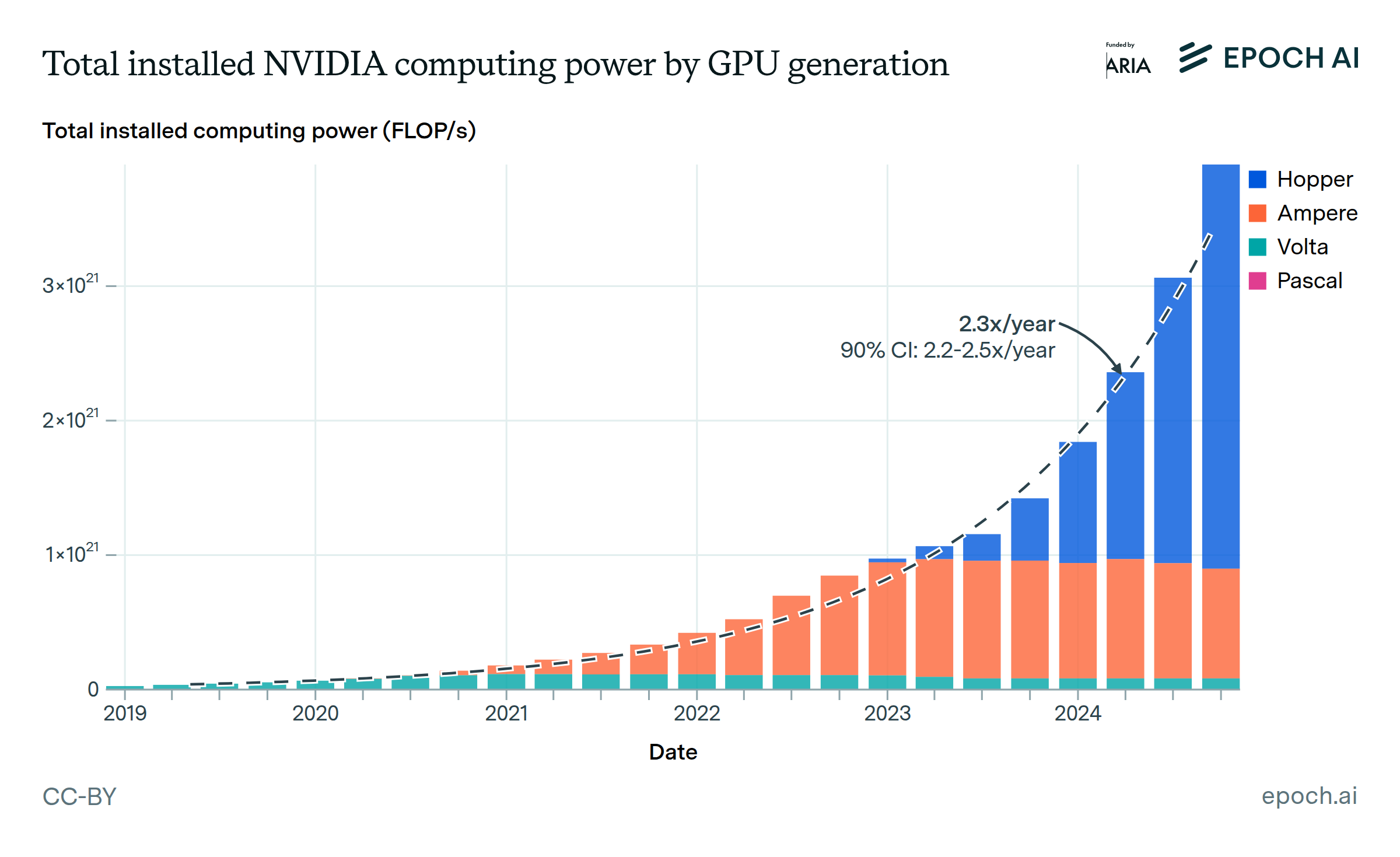
The stock of computing power from NVIDIA chips is doubling every 10 months

Over 30 AI models have been trained at the scale of GPT-4
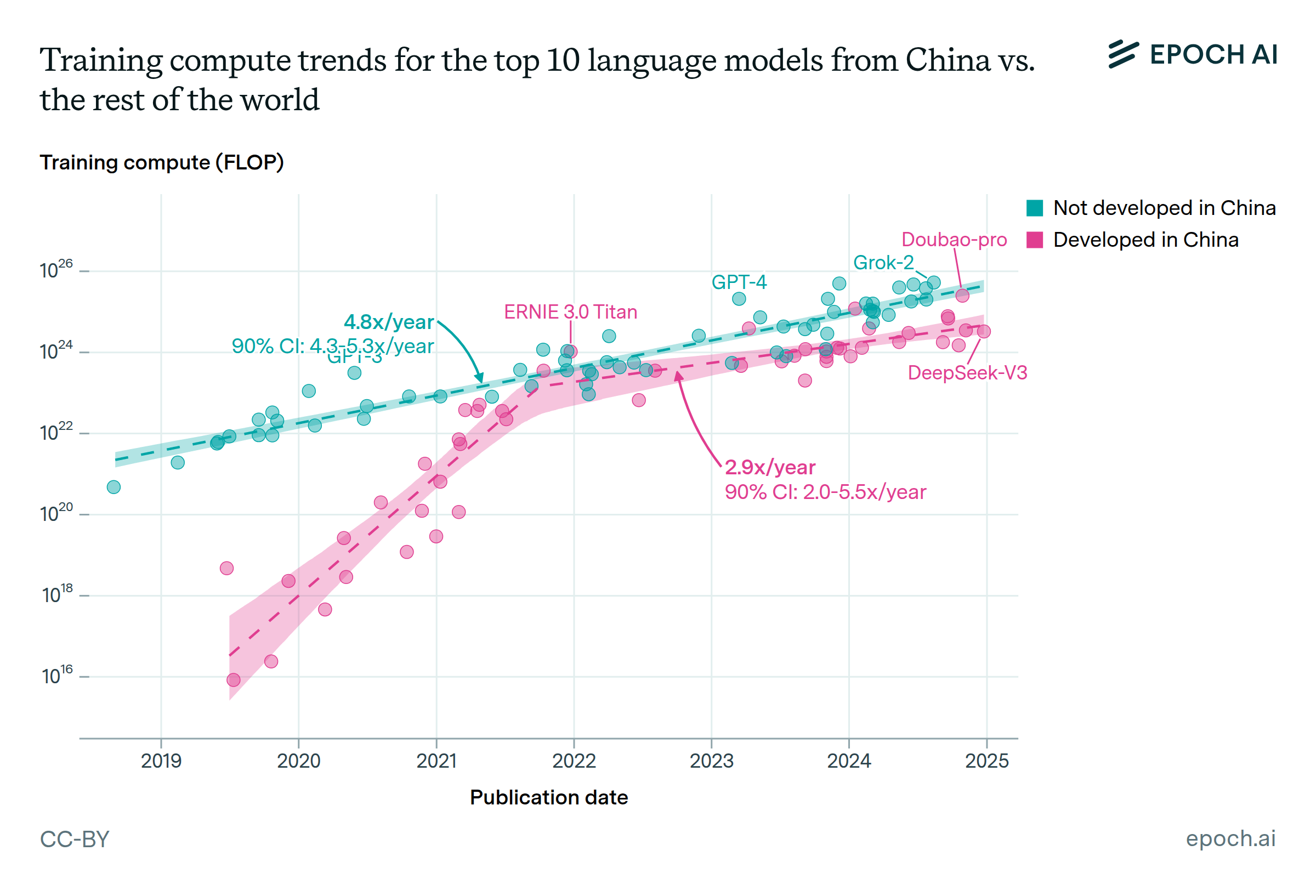
Chinese language models have scaled up more slowly than their global counterparts
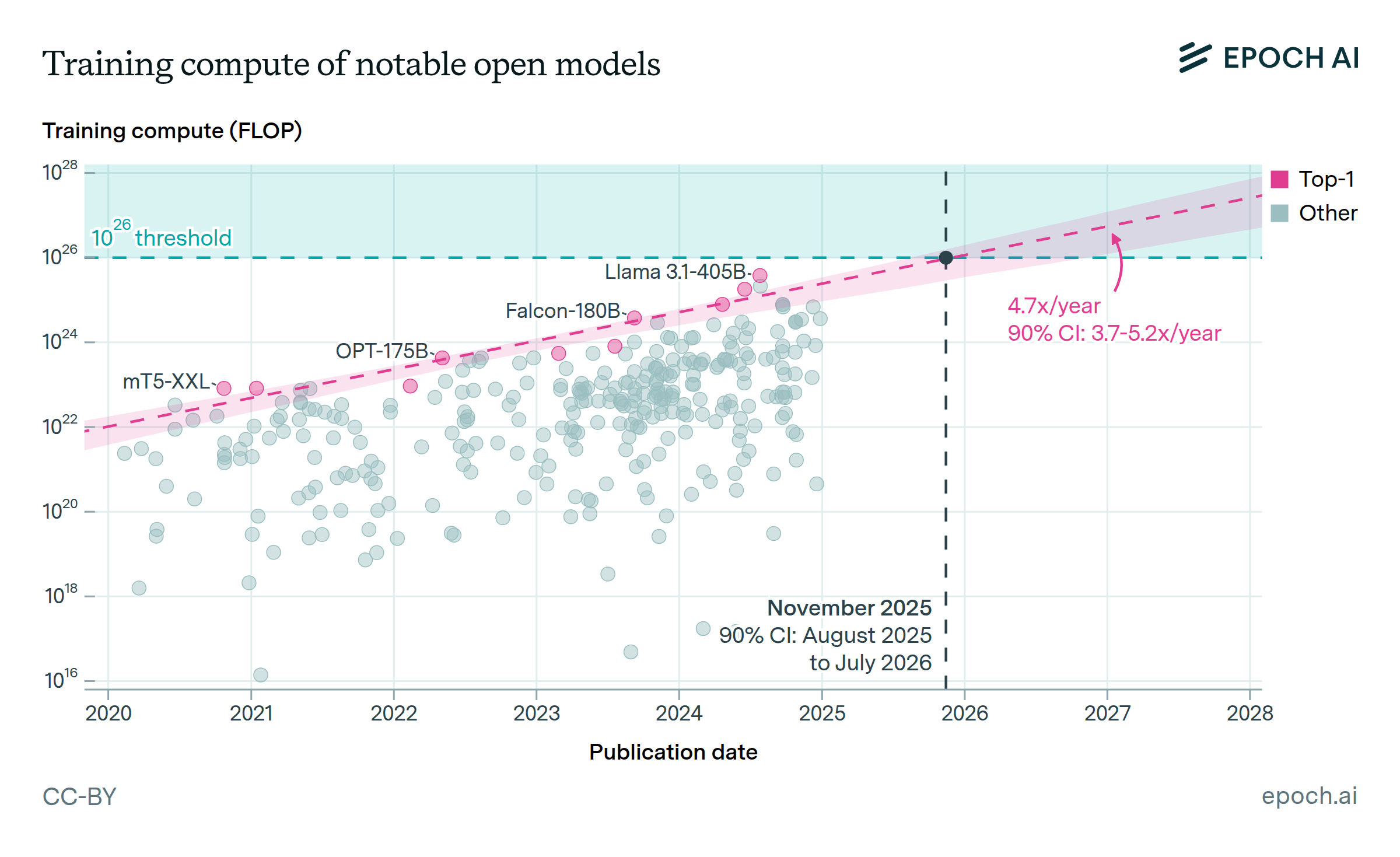
Frontier open models may surpass 1026 FLOP of training compute before 2026
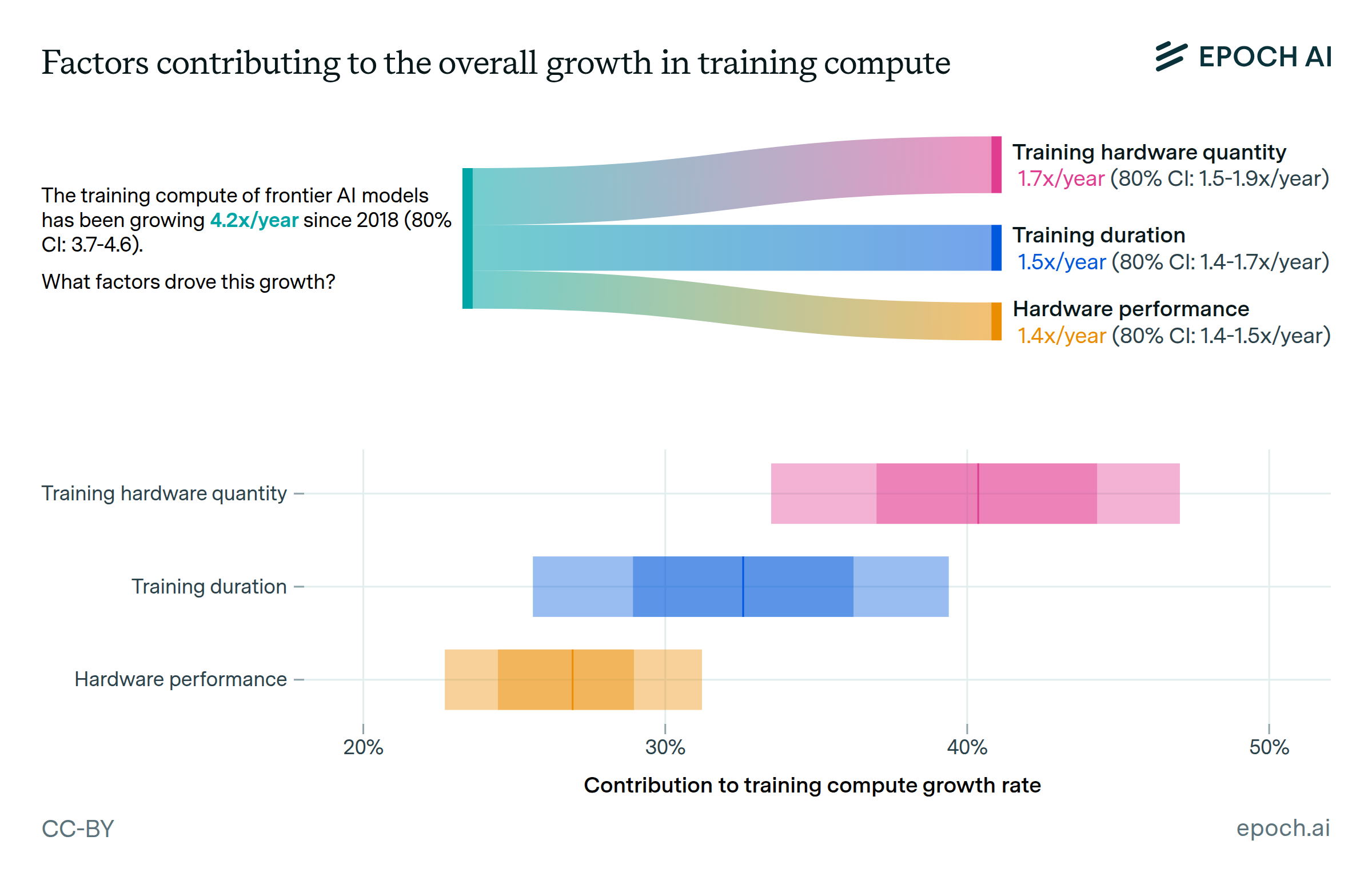
Training compute growth is driven by larger clusters, longer training, and better hardware

US models currently outperform non-US models
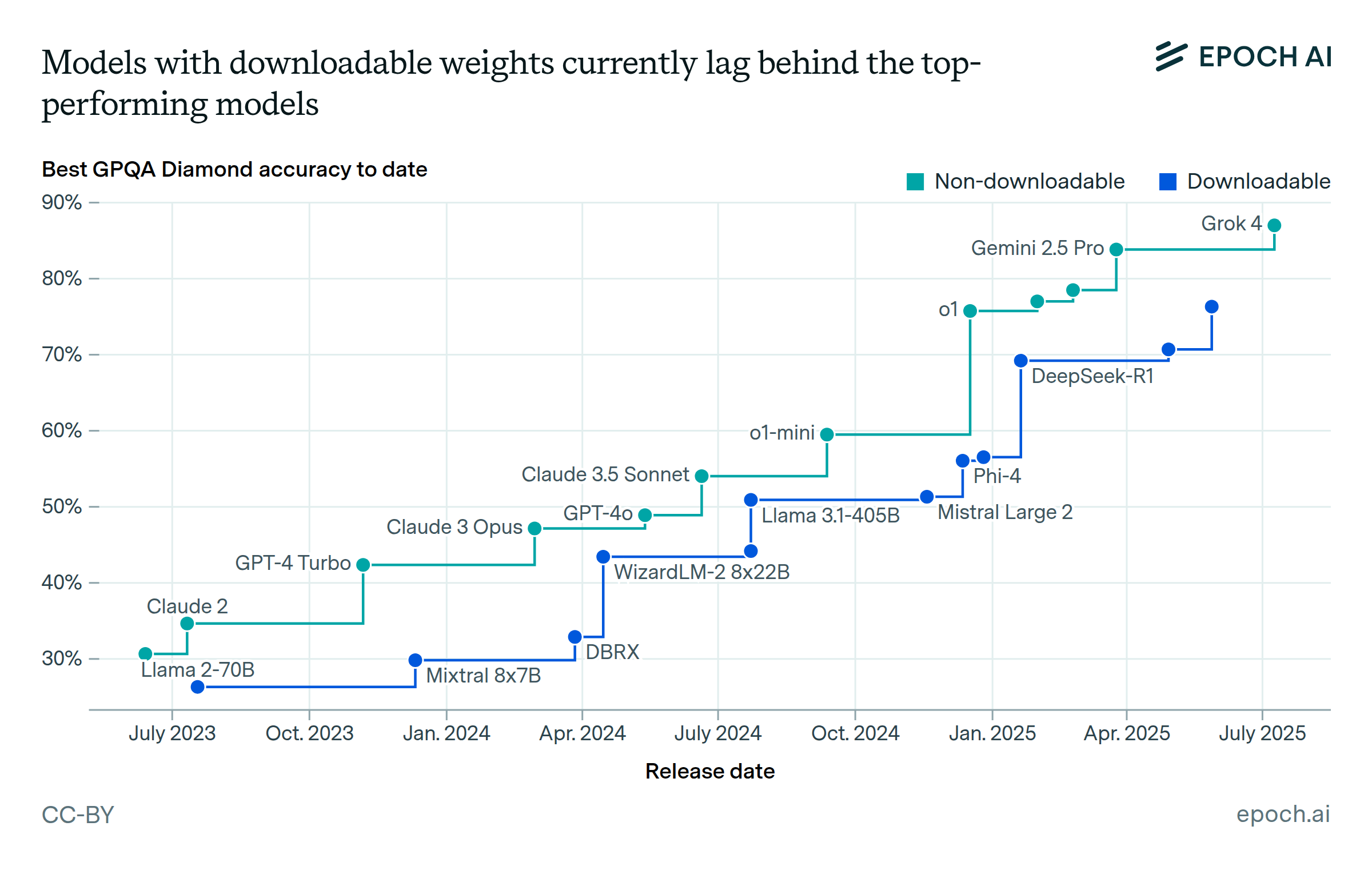
Models with downloadable weights currently lag behind the top-performing models
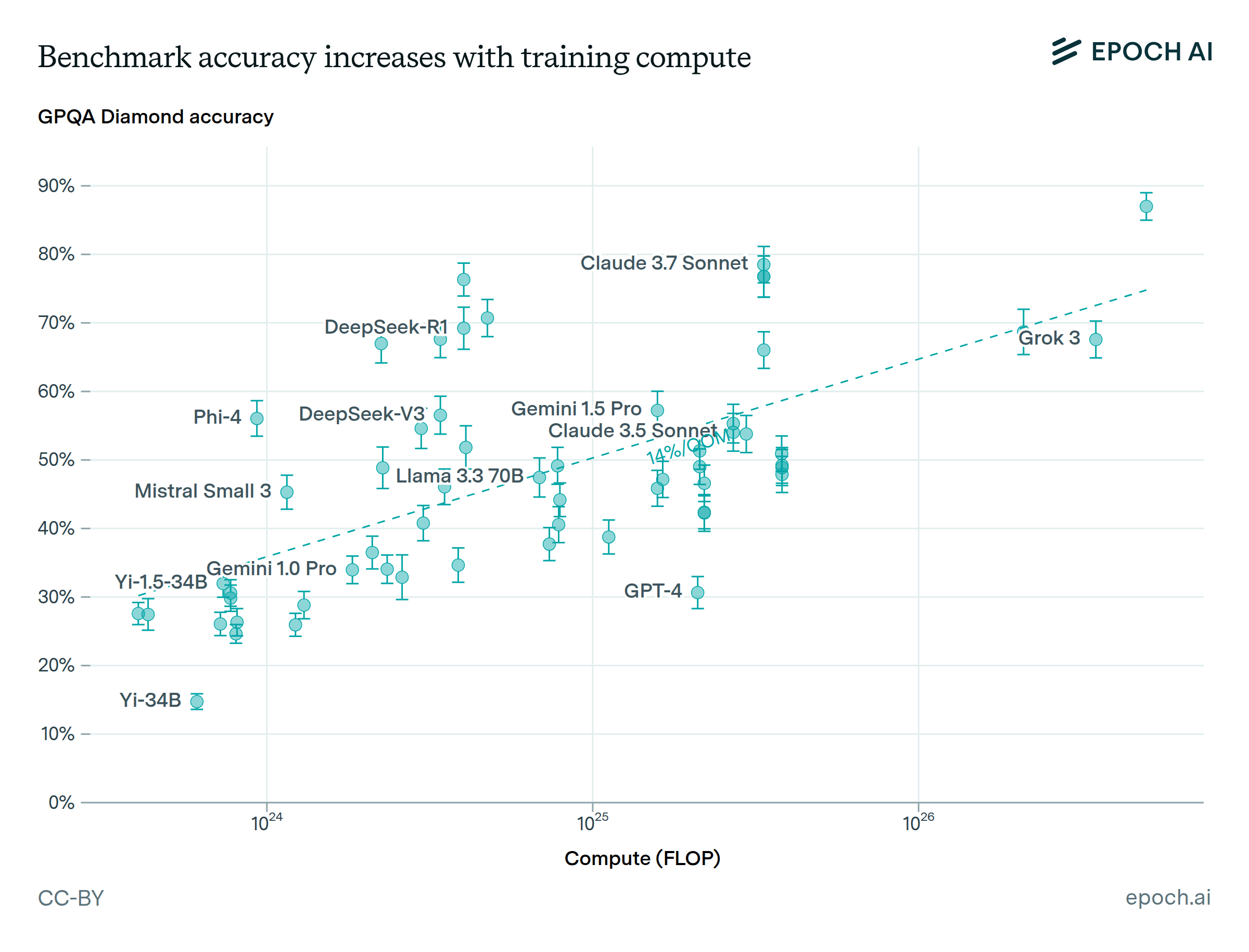
Accuracy increases with estimated training compute
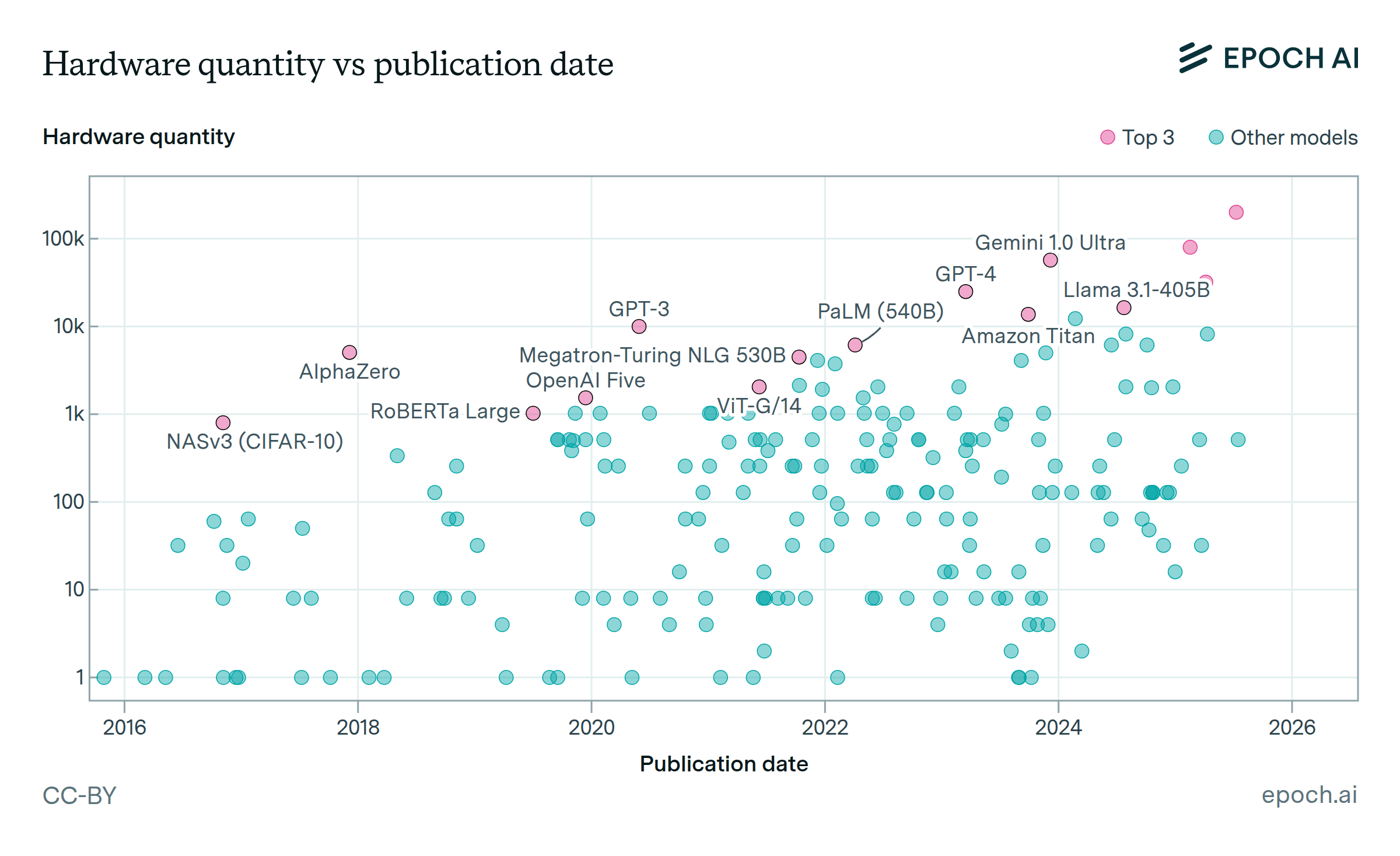
AI training cluster sizes increased by more than 20x since 2016
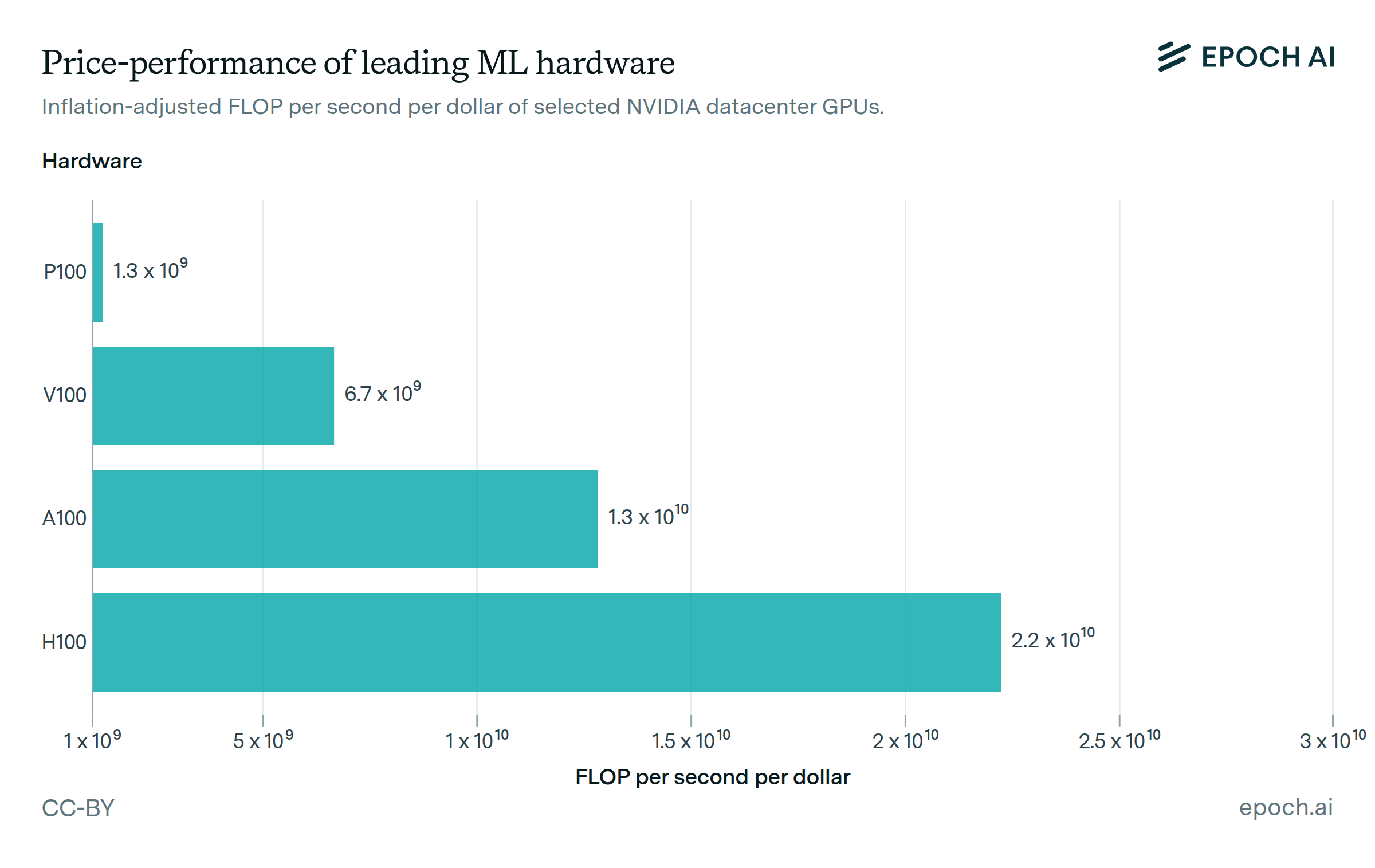
Performance per dollar improves around 30% each year

The computational performance of machine learning hardware has doubled every 2.3 years
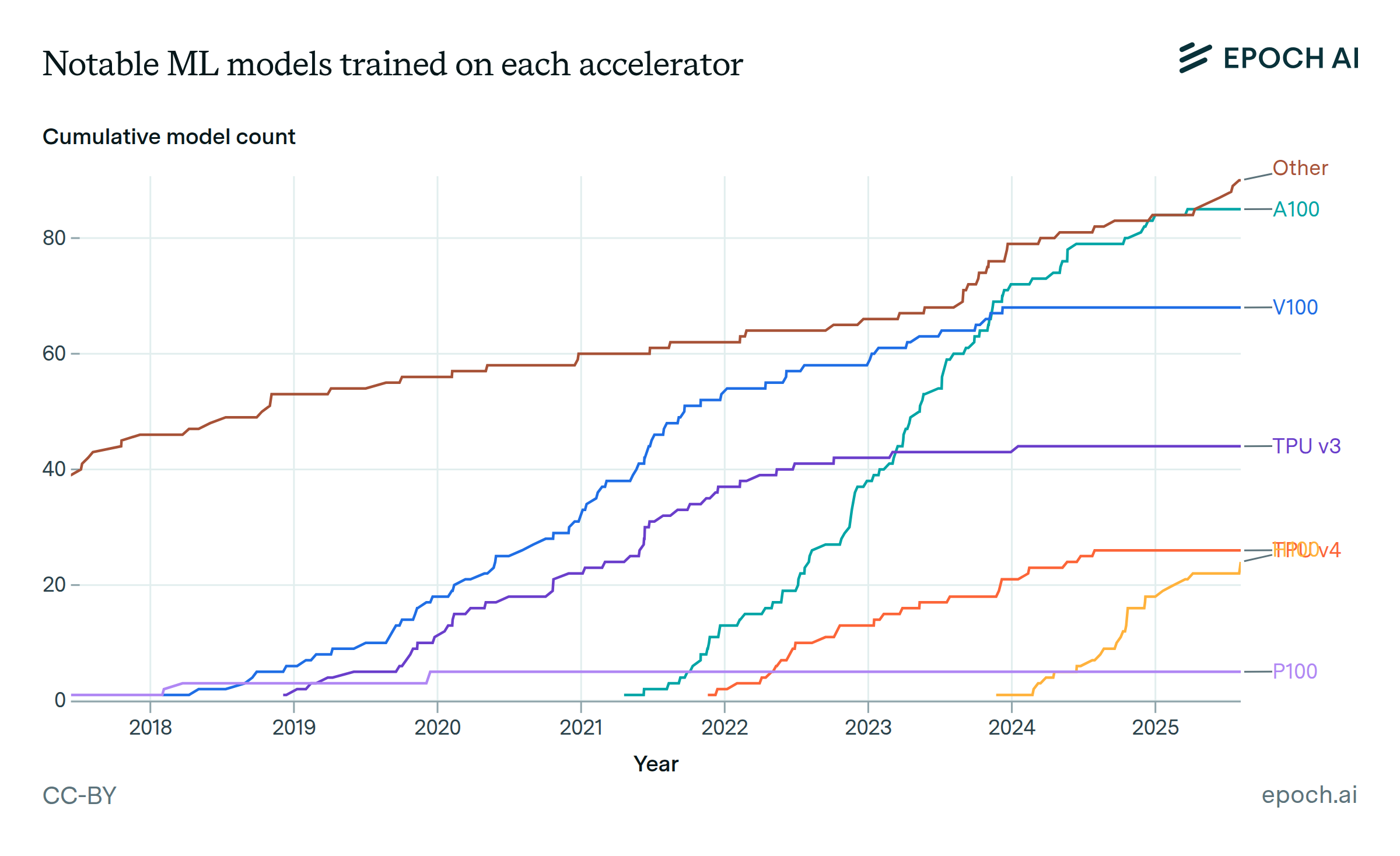
The NVIDIA A100 has been the most popular hardware for training notable machine learning models
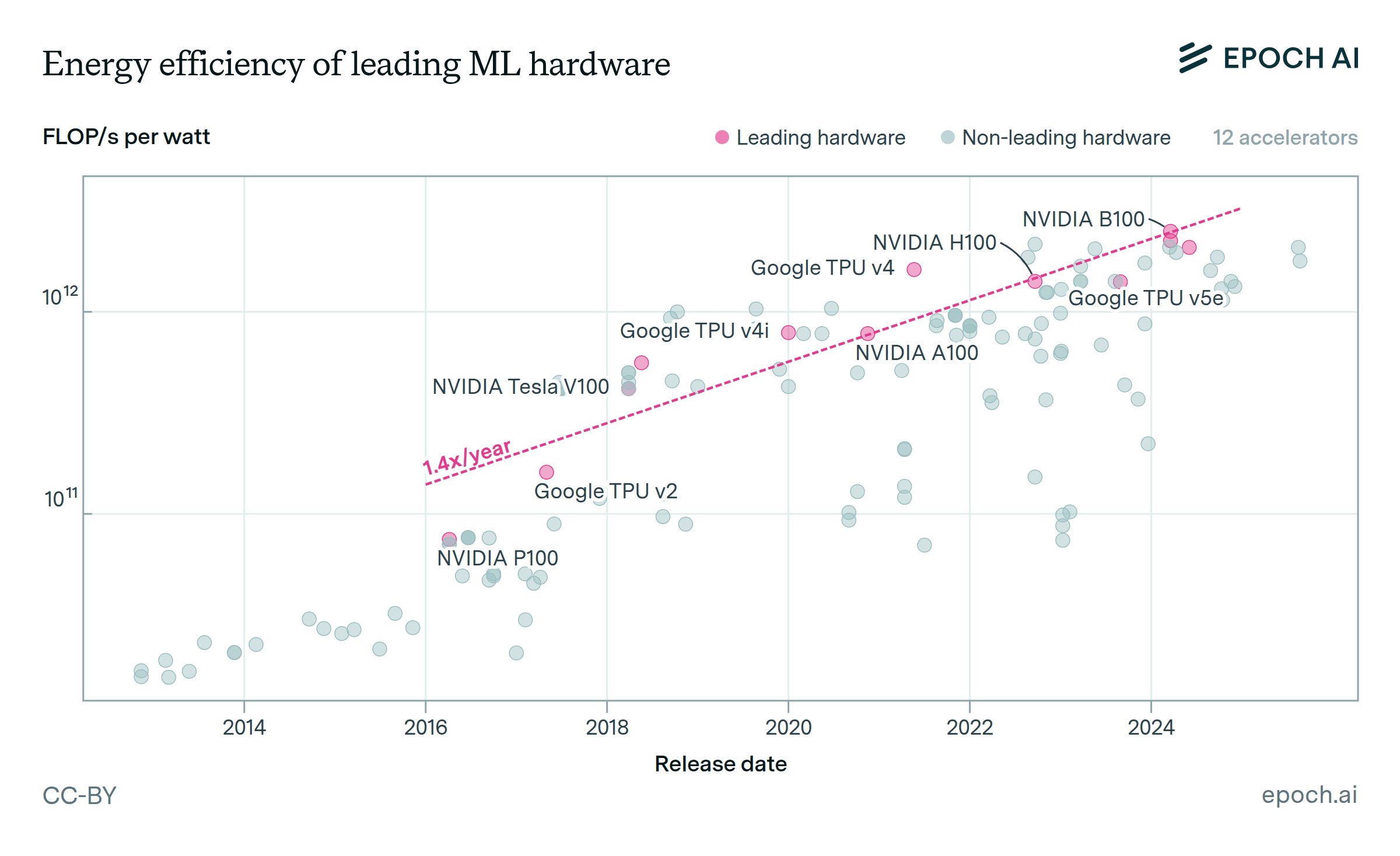
Leading ML hardware becomes 40% more energy-efficient each year

Performance improves 13x when switching from FP32 to tensor-INT8
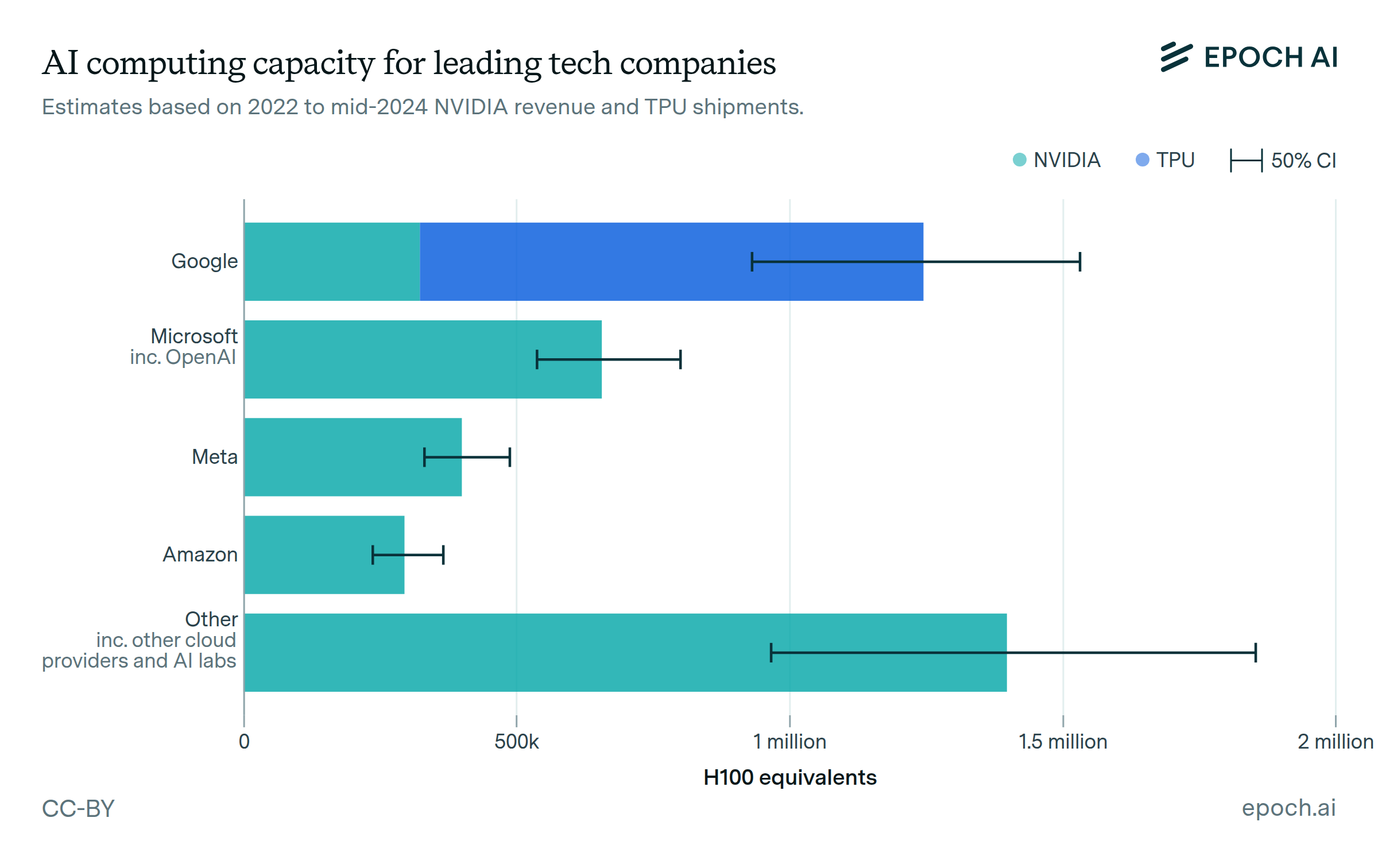
Leading AI companies have hundreds of thousands of cutting-edge AI chips
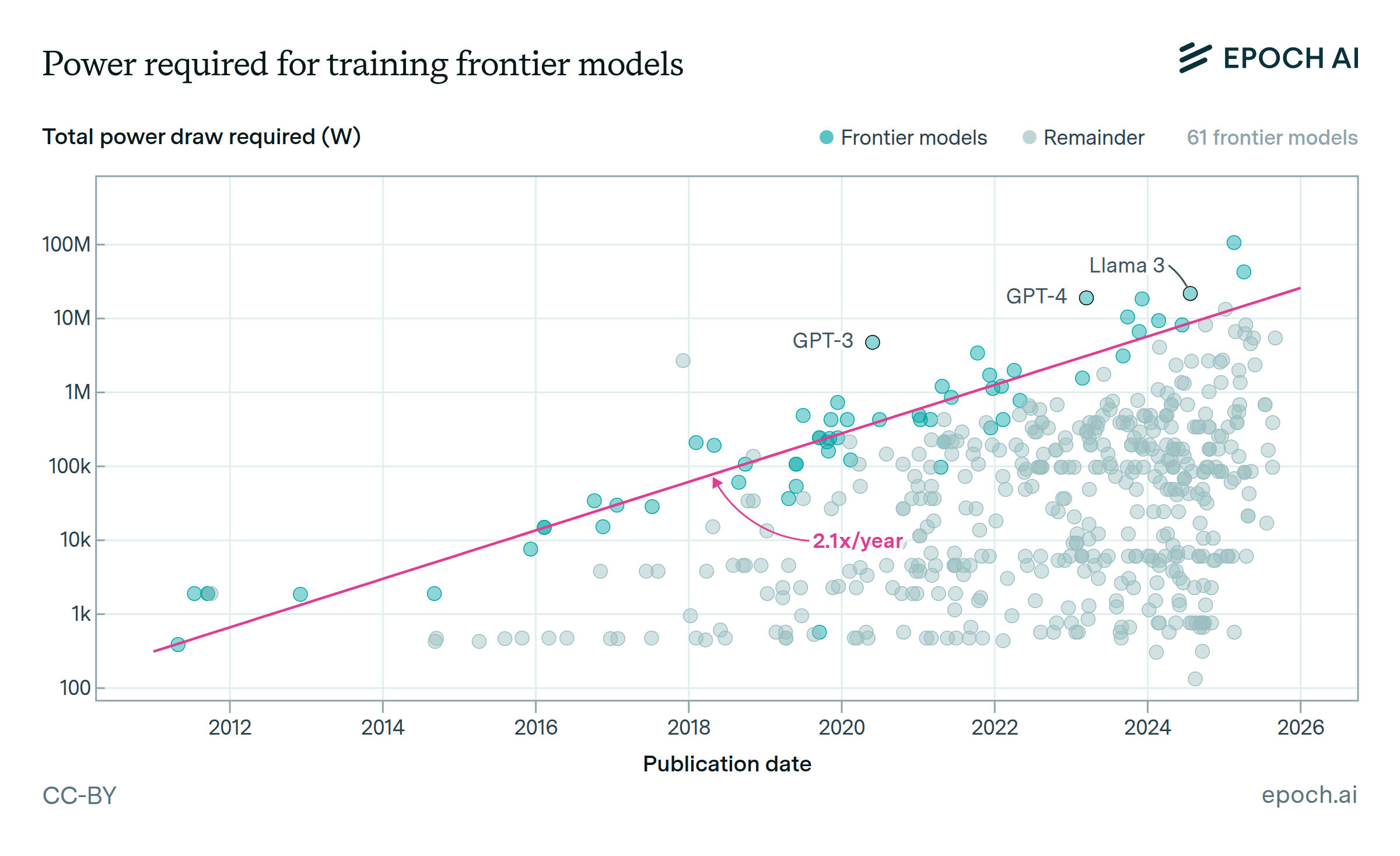
The power required to train frontier AI models is doubling annually
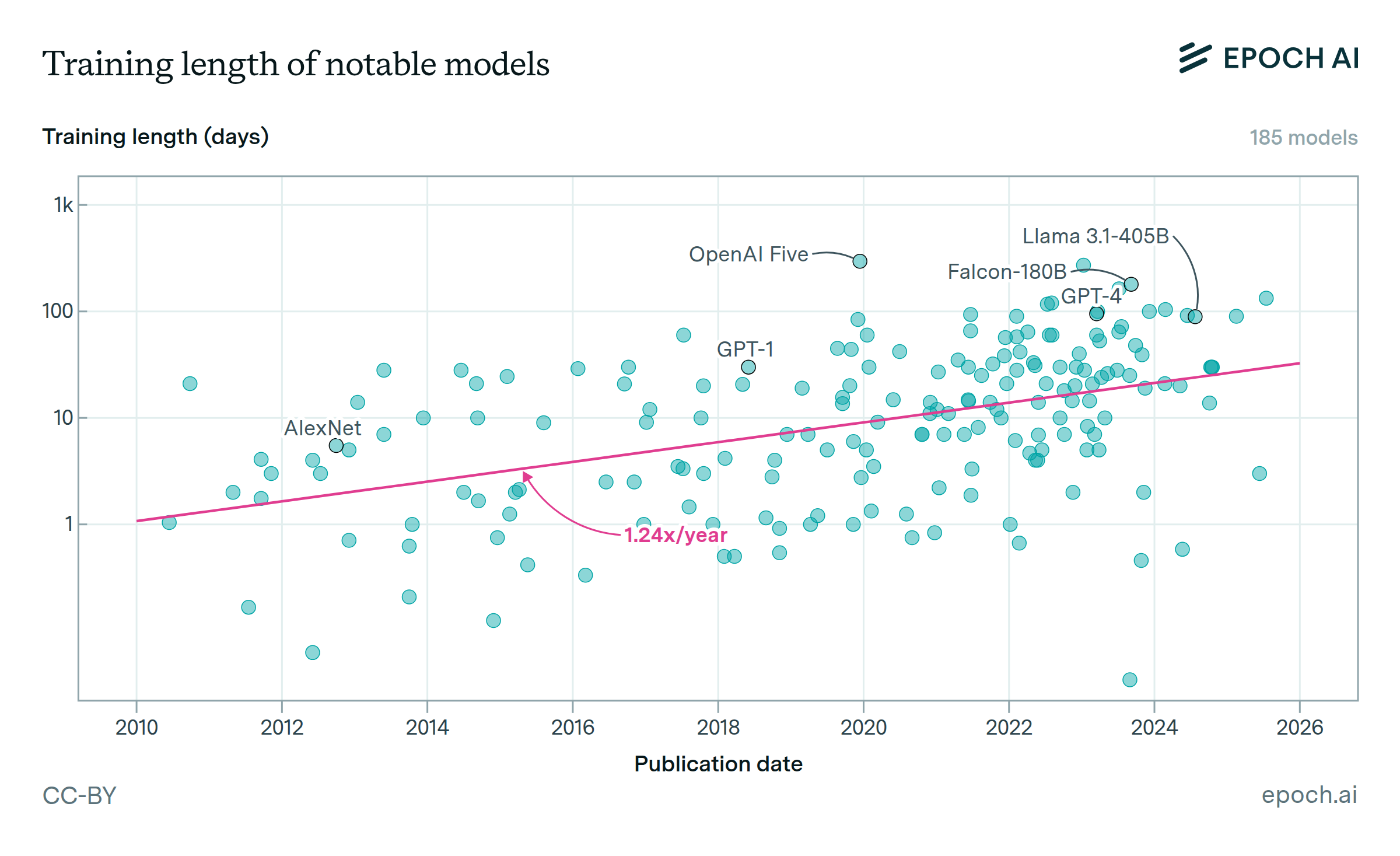
The length of time spent training notable models is growing
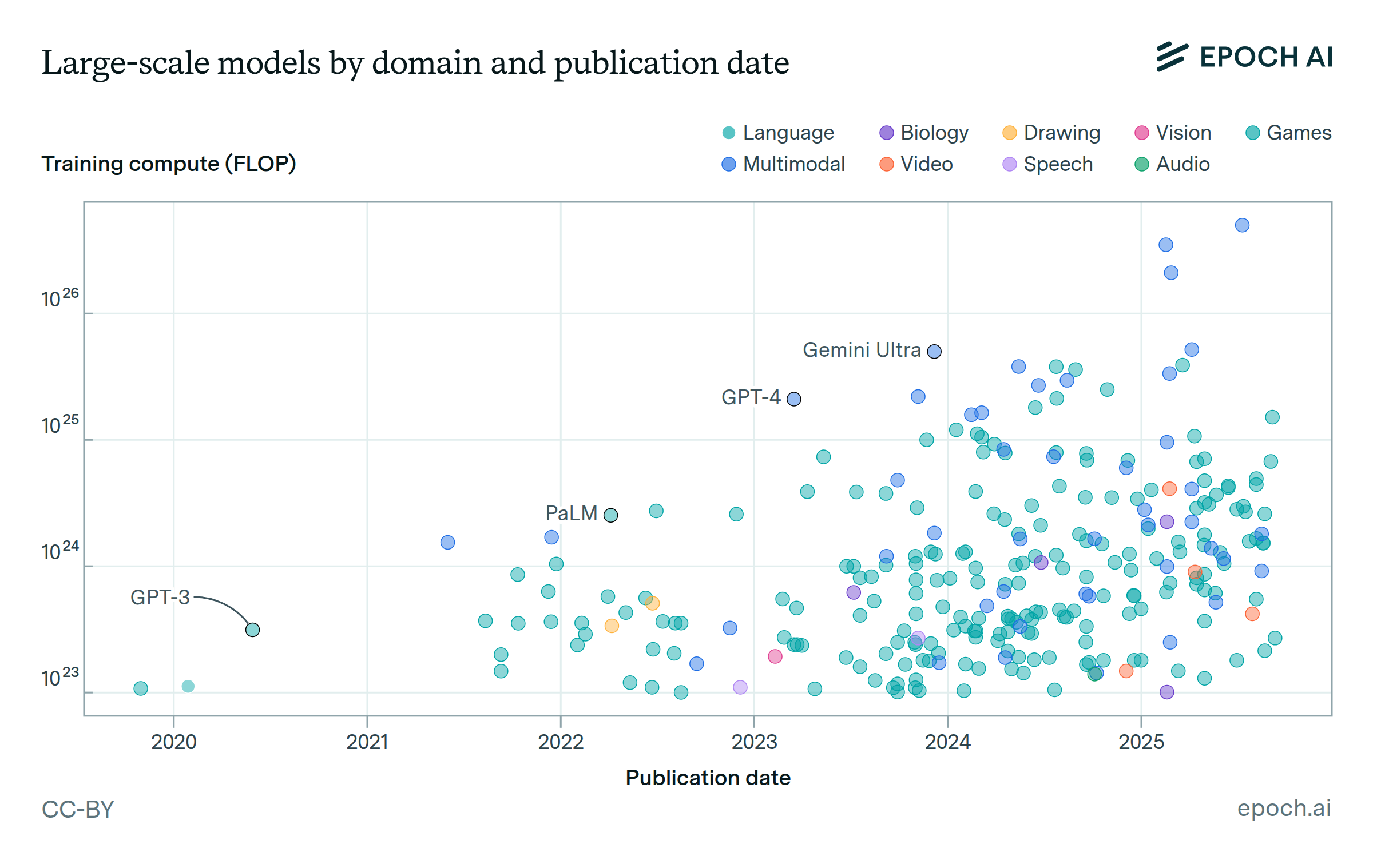
Language models compose the large majority of large-scale AI models

Most large-scale models are developed by US companies

The pace of large-scale model releases is accelerating

Almost half of large-scale models have published, downloadable weights
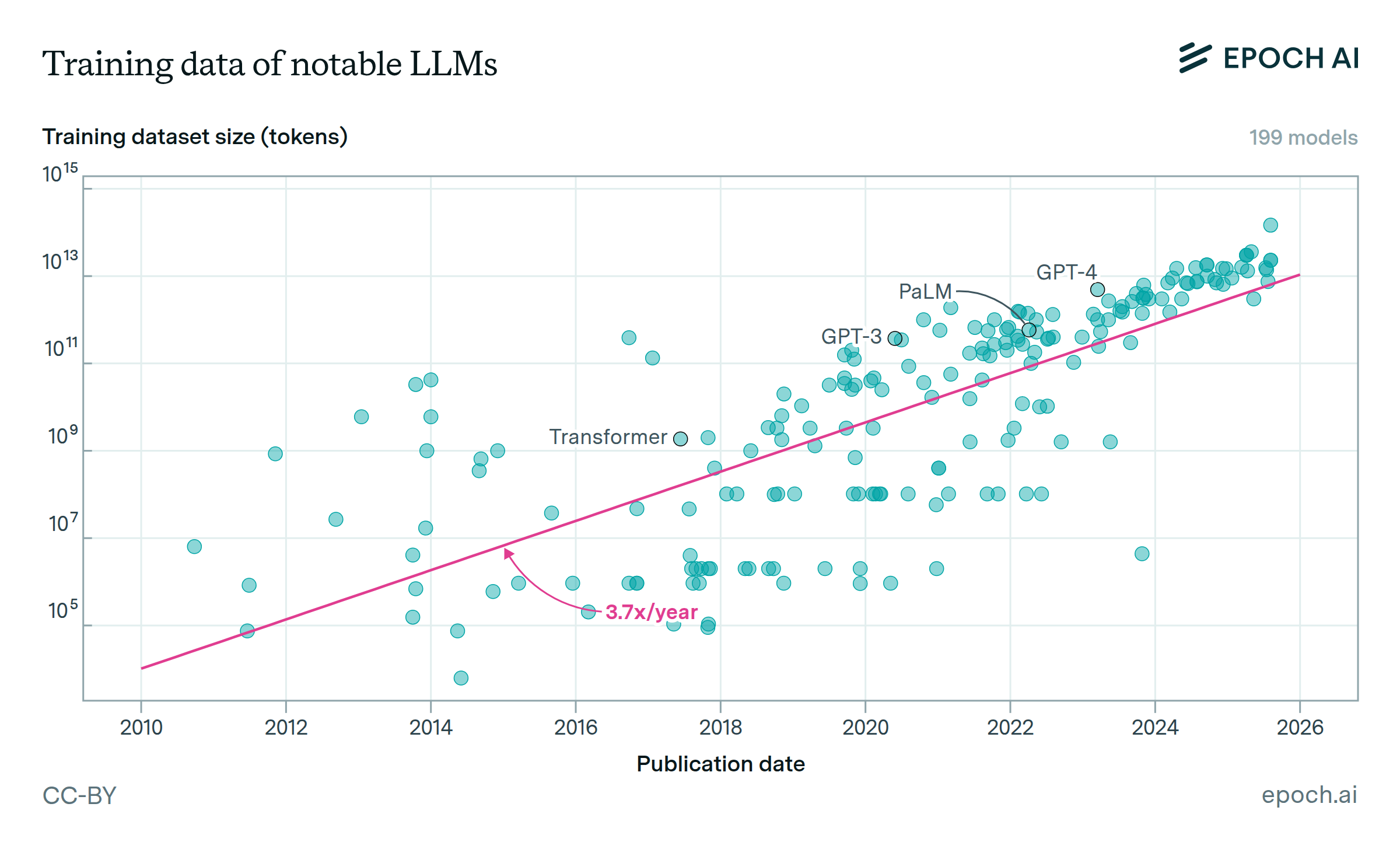
The size of datasets used to train language models doubles approximately every six months

Training compute costs are doubling every eight months for the largest AI models
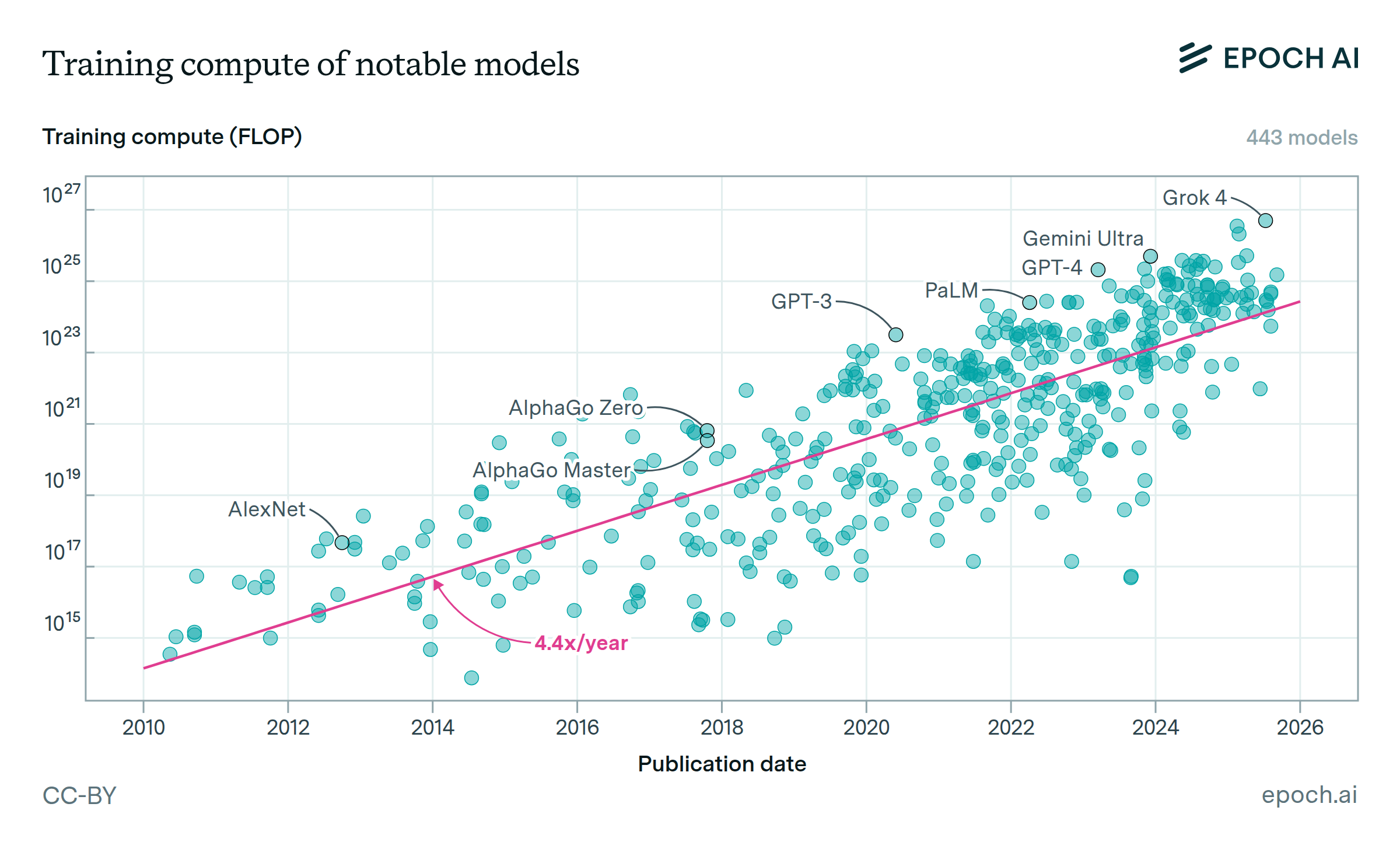
The training compute of notable AI models has been doubling roughly every six months

Training compute has scaled up faster for language than vision

